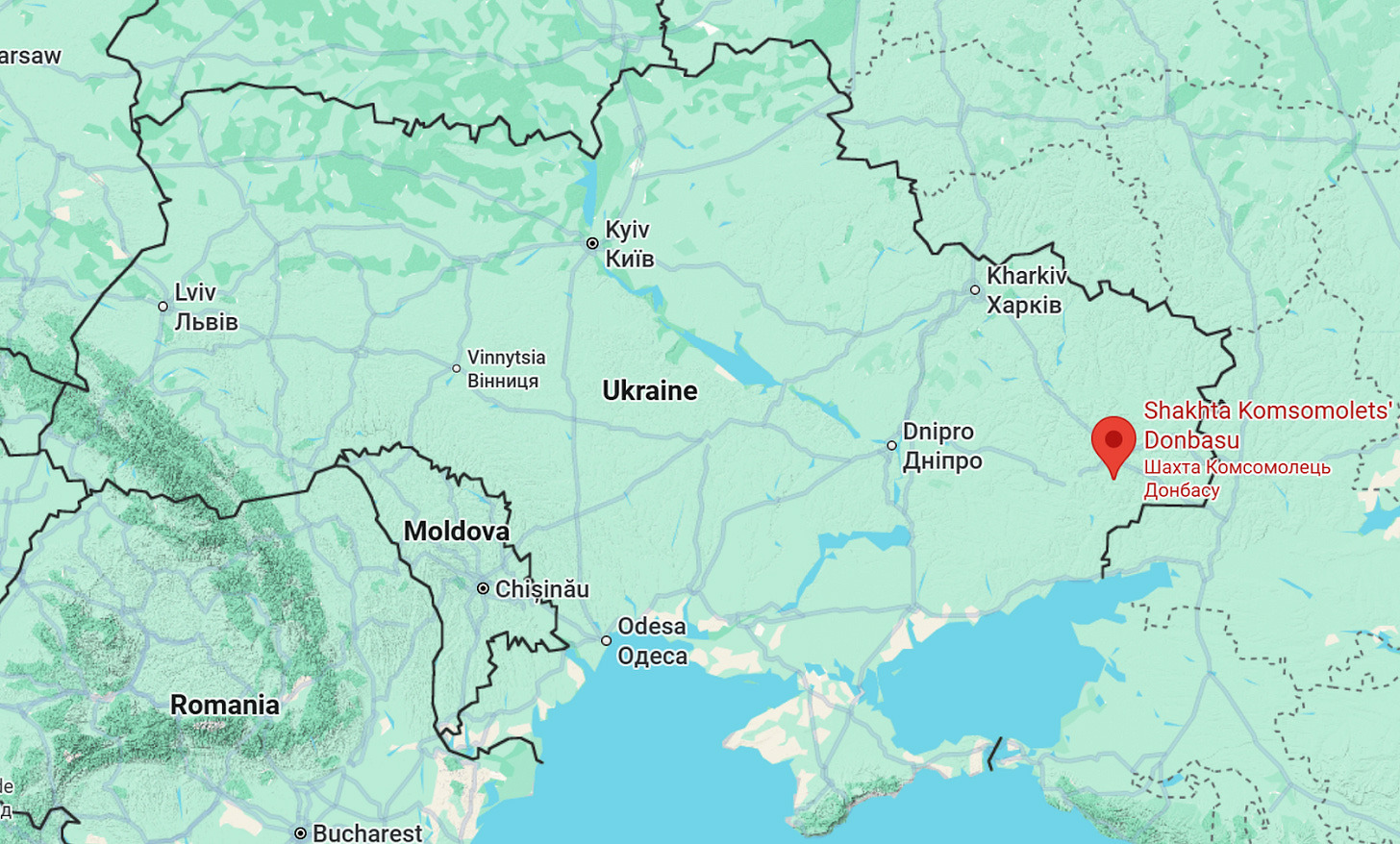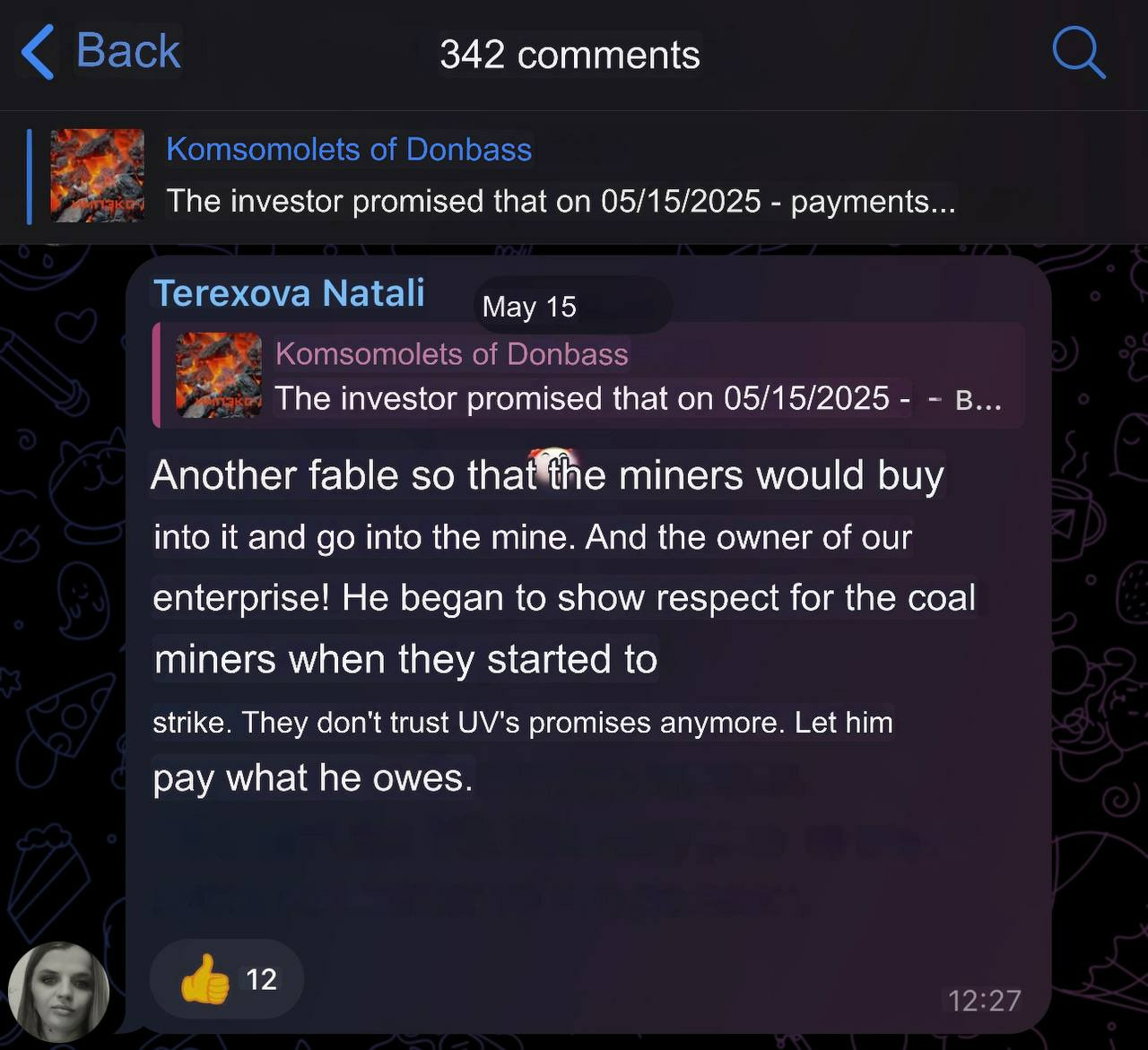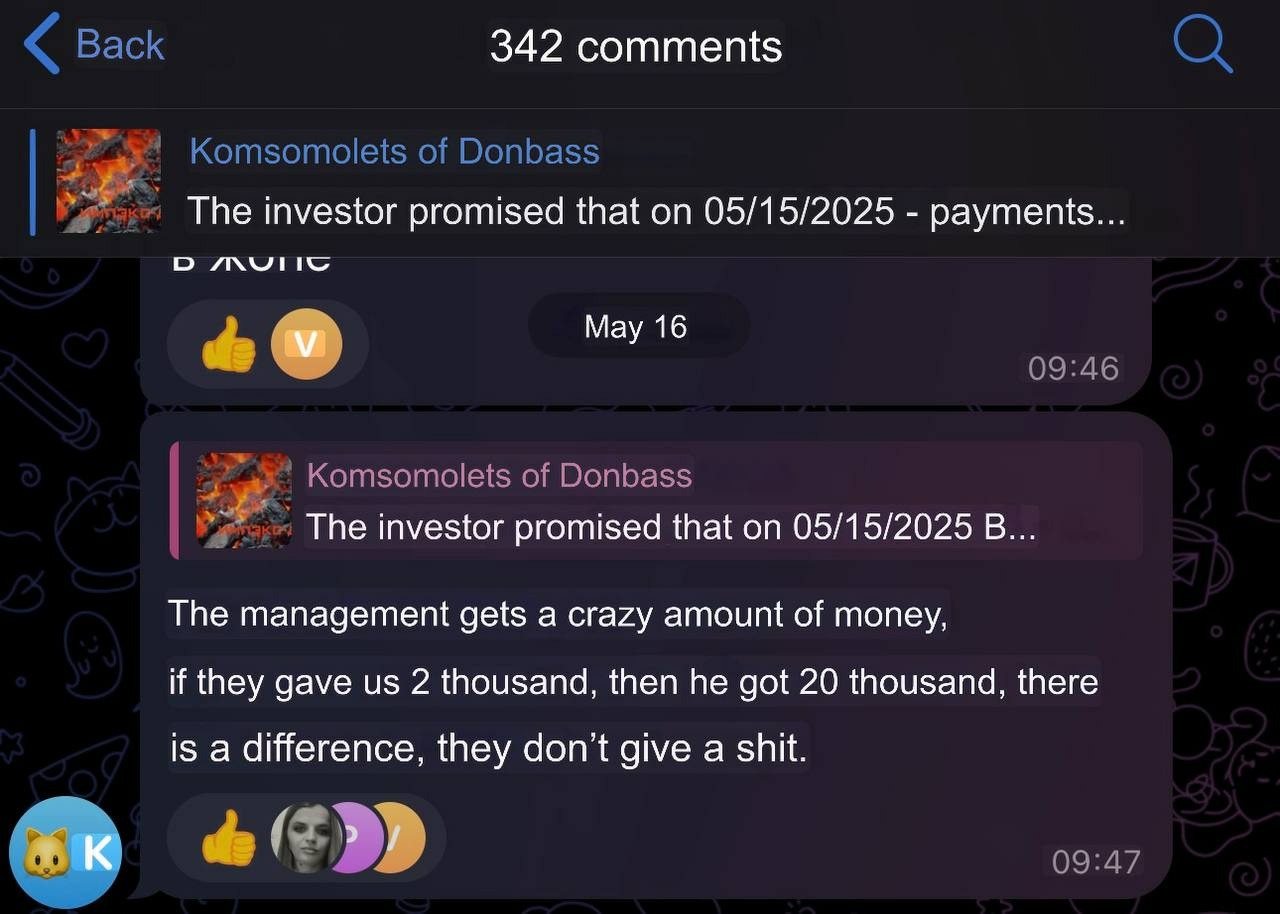-
Ukrainian drone brigade distances itself from ex-volunteer commander's criticism
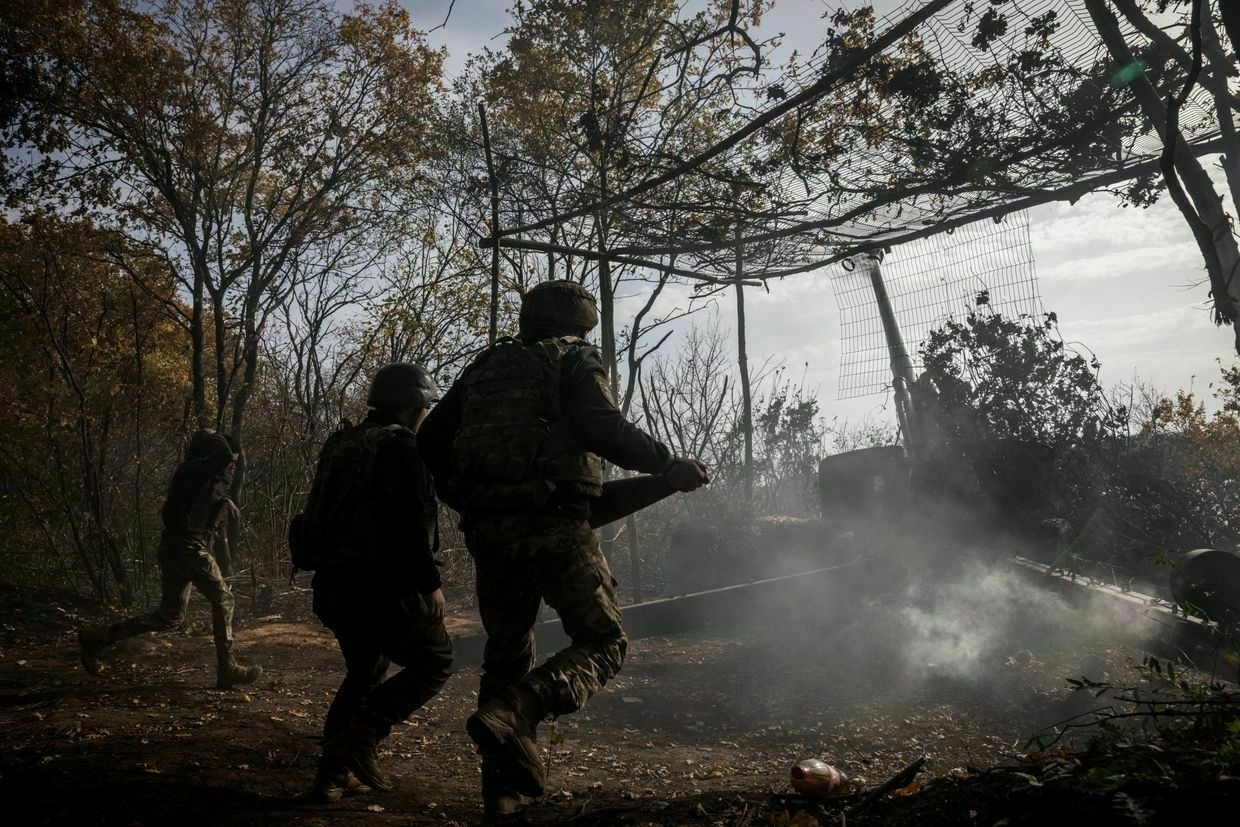
Ukraine’s 59th Brigade of the Unmanned Systems Forces said on June 17 that former fighter Ryan O’Leary no longer has access to current information about the unit’s operations and cannot speak on its behalf.
The statement follows public criticism from O’Leary, an American volunteer and former commander of the Chosen Company, who alleged widespread leadership failures within Ukraine’s Armed Forces.
On June 14, O’Leary said mismanagement within the military, rather than Russia’s action, was responsible for “more deaths,” accusing commanders of prioritizing personal power over troop welfare.
“The officer corps behaves like a caste system of untouchables or ‘army lords,'” he wrote on X.
Chosen Company, originally formed as the 312 Swedish Volunteer Company at the start of Russia’s full-scale invasion in 2022, has drawn members from more than 31 countries.
Its first commander, Swedish veteran Edvard Selander Patrignani, was killed in action in July 2022. O’Leary took command afterward, and the unit was integrated into the 59th Brigade in early 2023.
O’Leary accused the former commander of the 59th Brigade, Lieutenant Colonel Bohdan Shevchuk, of sending intelligence officers into reckless assaults, resulting in avoidable casualties. Shevchuk was recently removed from command after being accused of submitting false reports.
“In the first two months of his command, he sent soldiers into unattainable positions with no hope of reinforcement or survival,” O’Leary claimed.
In response, the 59th Brigade, deployed in the Pokrovsk sector in Donetsk Oblast, said O’Leary voluntarily resigned from service on Feb. 8, 2024, and has not taken part in any operations or internal decisions since.
“He does not have up-to-date information on the state of affairs in the unit and cannot comment on it,” the brigade said. “The dissemination of unfounded accusations and misinformation undermines morale and negatively affects the unit’s combat readiness."
The 59th Brigade emphasized that its soldiers continue to perform combat missions under challenging conditions and “maintain high efficiency and effectiveness."
O’Leary had announced the disbandment of the Chosen Company on May 26, but said he would wait to discuss details until his contract officially ended.
‘A brutal strike’ — Massive Russian missile and drone attack hits Kyiv, killing 10, injuring at least 124Russian drones and ballistic missiles targeted the capital overnight, killing 15 people and injuring at least 114, local authorities reported. Damage to civilian infrastructure has also been reported throughout the city.The Kyiv IndependentOlena Goncharova
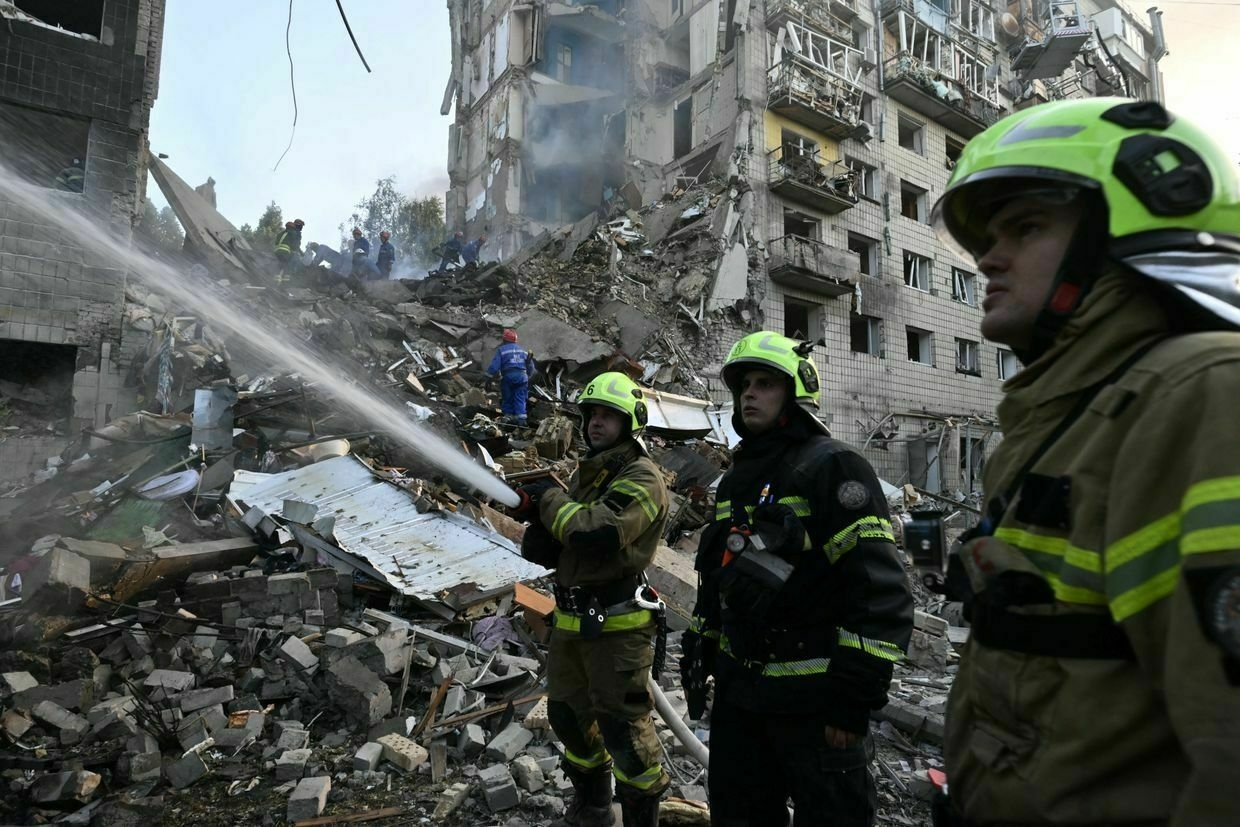
-
Carney on supporting Ukraine: We need MAXIMUM pressure on Russia #shorts
-
Canada announces $1.5 billion in new military aid to Ukraine, sanctions targeting Russia at G7 summit
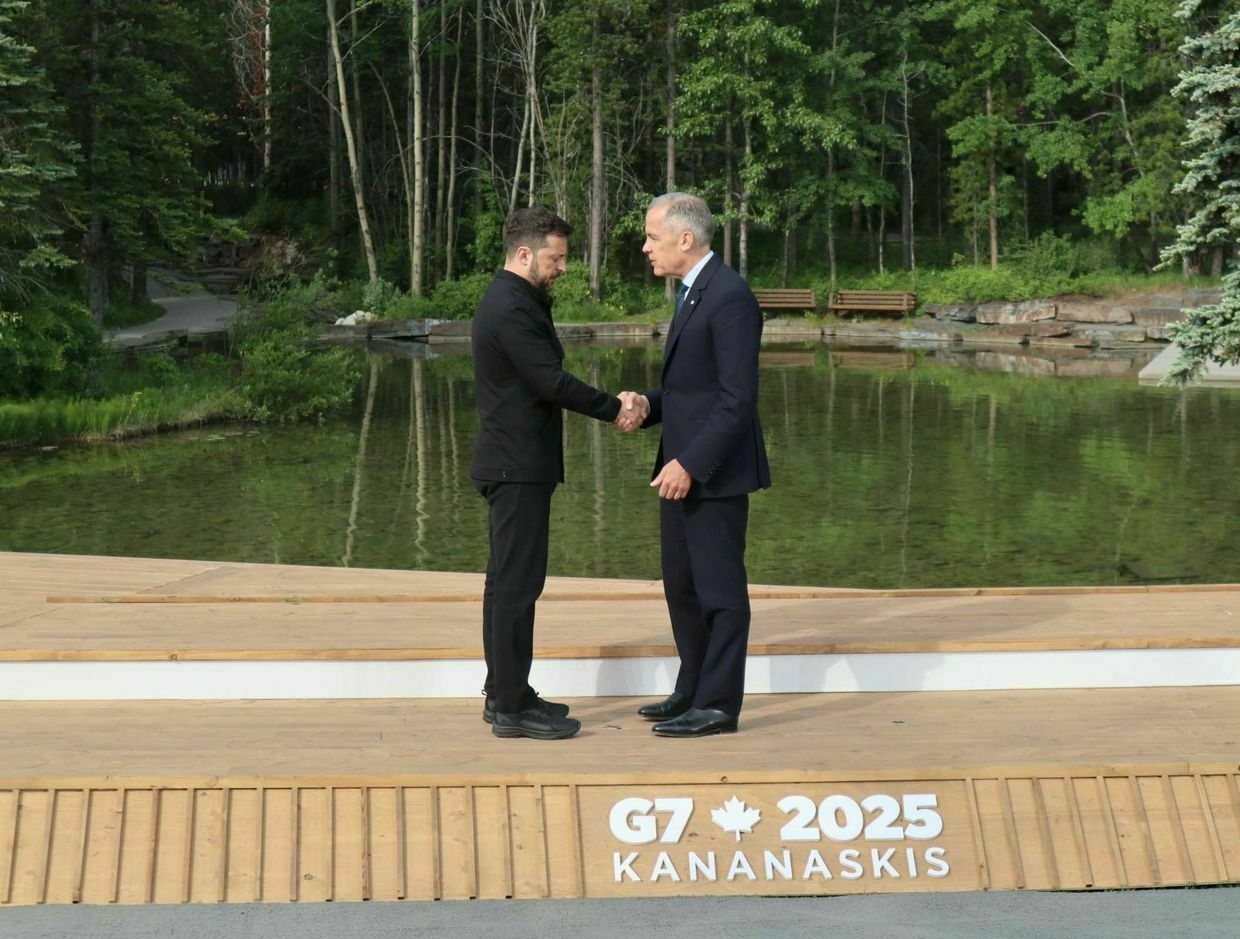
Canadian Prime Minister Mark Carney announced a sweeping new support package for Ukraine on June 17, during a bilateral meeting with President Volodymyr Zelensky on the final day of the G7 summit in Kananaskis, Alberta.
The measures include two billion Canadian dollars ($1.5 billion USD) in military funding and new sanctions aimed at restricting Russia’s energy revenues and evasion tactics.
“To be absolutely clear, this support will be unwavering until we get a just peace for Ukraine and the Ukrainian people,” Carney was quoted as saying.
The aid package includes funding for drones, ammunition, and armoured vehicles, as well as a $2.3-billion loan to support the reconstruction of Ukrainian infrastructure damaged by Russian attacks. Zelensky, who was invited to the summit by Carney, thanked the prime minister for his support, noting that Ukraine had just endured one of the largest missile attacks since the start of the full-scale invasion, killing 14 and injuring 117 people in Kyiv.
The new sanctions target 77 individuals and 39 entities, including 15 people involved in Russia’s so-called “shadow fleet,” three financial firms facilitating war-related transactions, and 14 entities tied to the development of quantum technologies with possible military use. Canada also upgraded its sanctions against Russian oil and gas giant Surgutneftegas.
Canada’s announcement came alongside similar measures from the U.K., which sanctioned individuals and entities connected to Russian finance, energy, and military operations, including 20 shadow fleet vessels and two U.K.-based individuals accused of exporting high-tech electronics to Russia.
‘He said he wasn’t going anywhere’ — Survivors search for missing following Russia’s deadliest attack on Kyiv this yearSitting a few meters from the rubble of what used to be a nondescript nine-story residential building in Kyiv, Lilia rises to her feet every time another pile of debris is cleared from the site targeted by Russia during a mass overnight attack on June 17. “We are waiting (asThe Kyiv IndependentKateryna Denisova
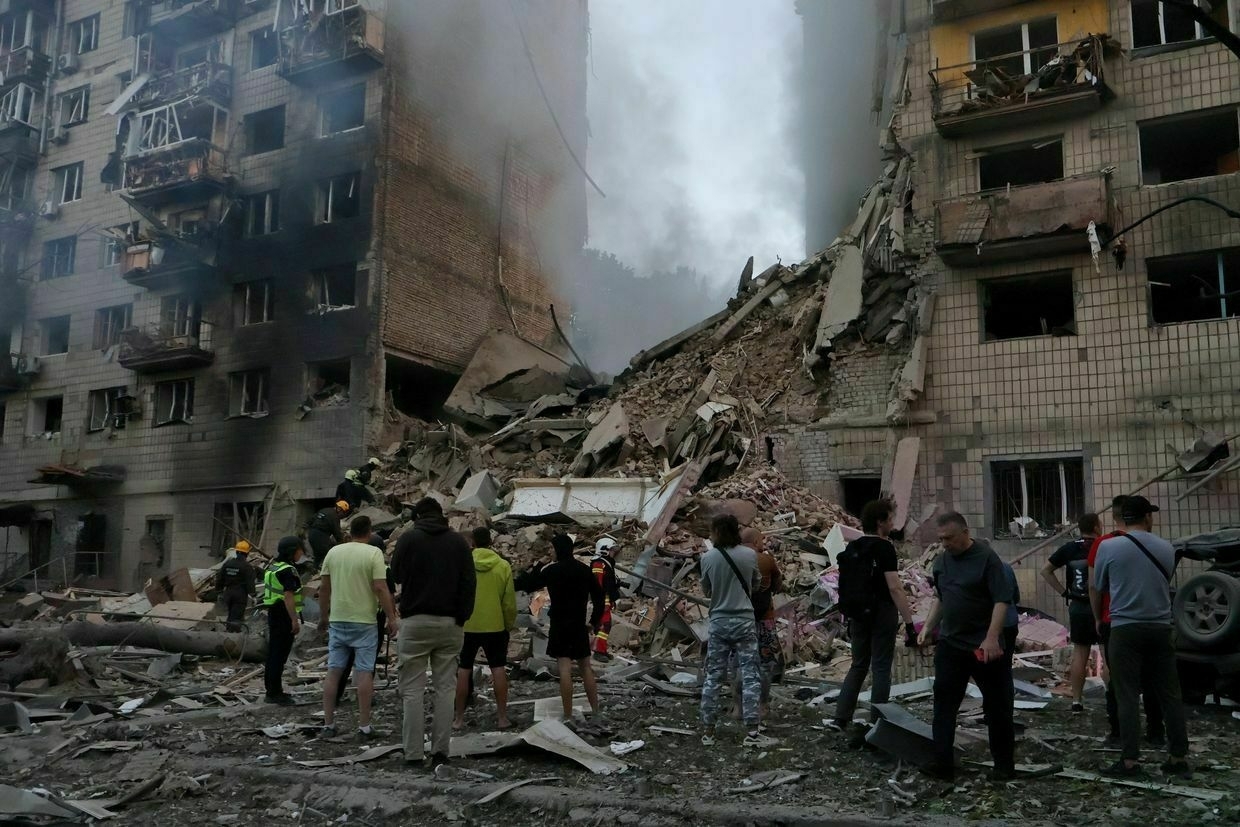
-
Ukrainian Forces report surge in Russian surrenders near Lyman
In the face of harsh conditions and abandoned by their leaders, Russian soldiers near Lyman are surrendering in droves, according to Ukrainian military officers. Senior Lieutenant Rostyslav Yashchishyn of the 63rd Separate Mechanized Brigade reported a dramatic increase in Russian combatants opting for capture, often due to being left without food or water. As per the Army Inform, these surrenders include both Russian soldiers and foreigners, the latter having joined the Russian Armed Forces in pursuit of citizenship. "They didn’t initially come here to surrender. They fight as long as they can, but given the hopelessness of their situation, they eventually surrender," explains Yashchishyn.
In a twist, some prisoners of war, hailing from Kazakhstan, Uzbekistan, Tajikistan, and Armenia, joined the Russian military campaigns to earn citizenship, suggesting their primary aim is financial gain and acquiring a Russian passport, Yashchishyn notes. The route to citizenship apparently involves a year-long military contract.
Meanwhile, on June 17, DeepState analysts signaled a shift, noting the Russian advance toward the main highway to Sumy. However, military analyst Oleksiy Hetman downplayed the threat, emphasizing that Russia had expended its offensive momentum after breaching Ukraine's most vulnerable defenses in this part of the region.
On June 16, the "Rubezh" Brigade of the Ukrainian National Guard reported the Russian forces have persistently resorted to prohibited chemical weapons for over three weeks during assaults in Donetsk, exacerbating the humanitarian crisis.
-
Ukraine war latest: Massive Russian attack kills 14, injures 117 in Kyiv
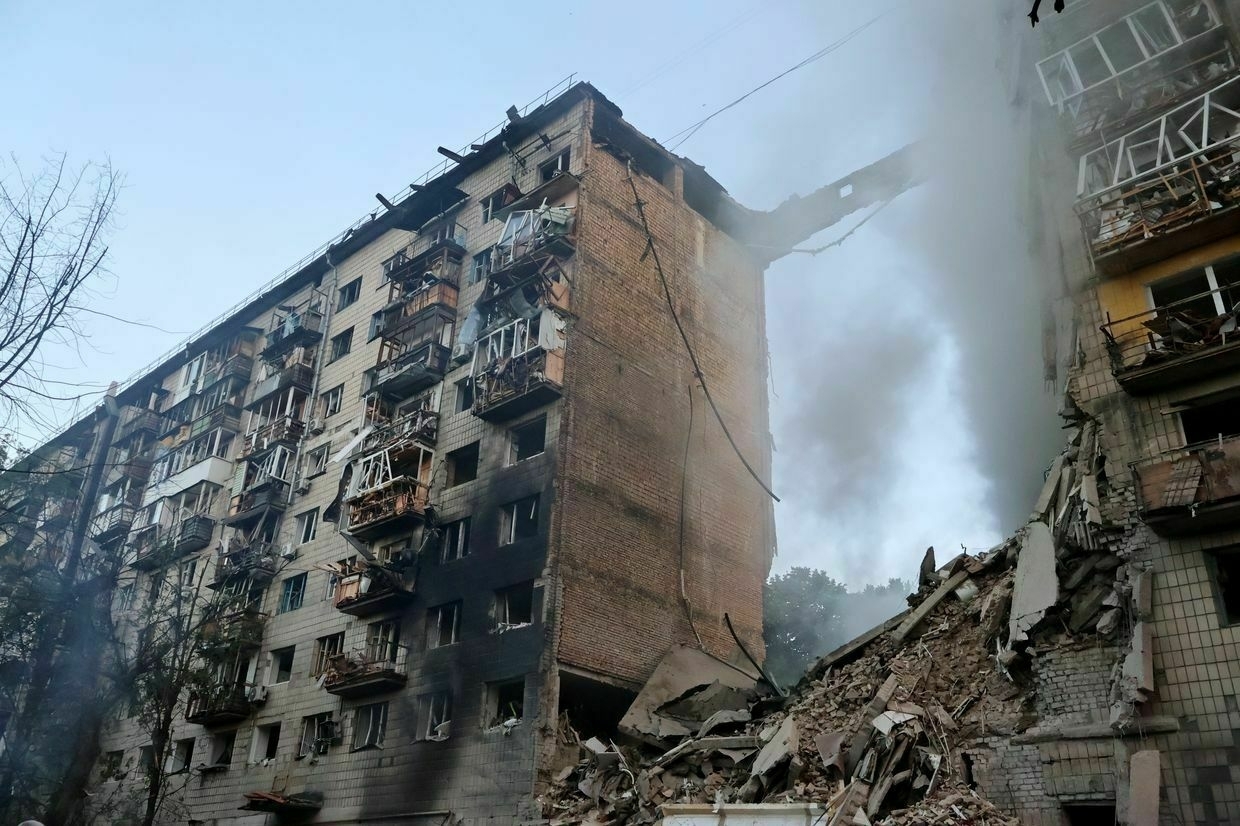
Key developments on June 17:
- ‘A brutal strike’ — Massive Russian missile and drone attack hits Kyiv, killing 14, injuring at least 117
- Zelensky arrives at G7 summit hours after Trump departs
- US group designed to pressure Russia into peace in Ukraine disbanded by Trump administration, Reuters reports
- US reportedly considers strikes on Iran as Trump demands' unconditional surrender'
- Russian military-industrial chemical plant halts operations after Ukrainian drone strike
At least 14 people have been killed and at least 117 others injured after a mass Russian missile and drone attack on Kyiv overnight on June 17.
Ukraine’s National Police initially reported 15 dead and 124 injured in the attack, but Interior Minister Ihor Klymenko later revised the death toll to 10. The State Emergency Service subsequently updated the figure to 14.
Klymenko said operational data may change, as body parts found during rescue efforts can sometimes be mistakenly counted as multiple victims.
According to the State Emergency Service, one body has been recovered from the rubble of the nine-story building, and rescue operations are still ongoing.
The almost nine-hour-long attack saw Moscow’s forces launch large numbers of kamikaze attack drones, as well as cruise and ballistic missiles at Ukraine’s capital.
Kyiv Independent journalists on the ground reported the sounds of drones, missiles, and multiple rounds of explosions throughout the night.
The Ukrainian Air Force confirmed that Russia launched 472 aerial weapons overnight, including nearly 280 Shahed-type attack drones and two Kinzhal ballistic missiles. The strike primarily targeted Kyiv.
Ukraine’s air defense forces reportedly destroyed 428 air targets, including 239 Shahed drones and 15 Kh-101 cruise missiles. Air defenses also intercepted one Kinzhal missile, while another was reportedly lost from radar tracking.
President Volodymyr Zelensky called the assault “one of the most horrifying attacks on Kyiv,” saying more than 440 drones and 32 missiles were launched across Ukraine overnight.
“Such attacks are pure terrorism,” he said in a statement on social media. “And the whole world, the U.S., and Europe must finally respond as civilized societies respond to terrorists."
Zelensky confirmed that damage had been reported in eight districts of Kyiv, with emergency workers still searching for survivors beneath the rubble of a destroyed apartment block.
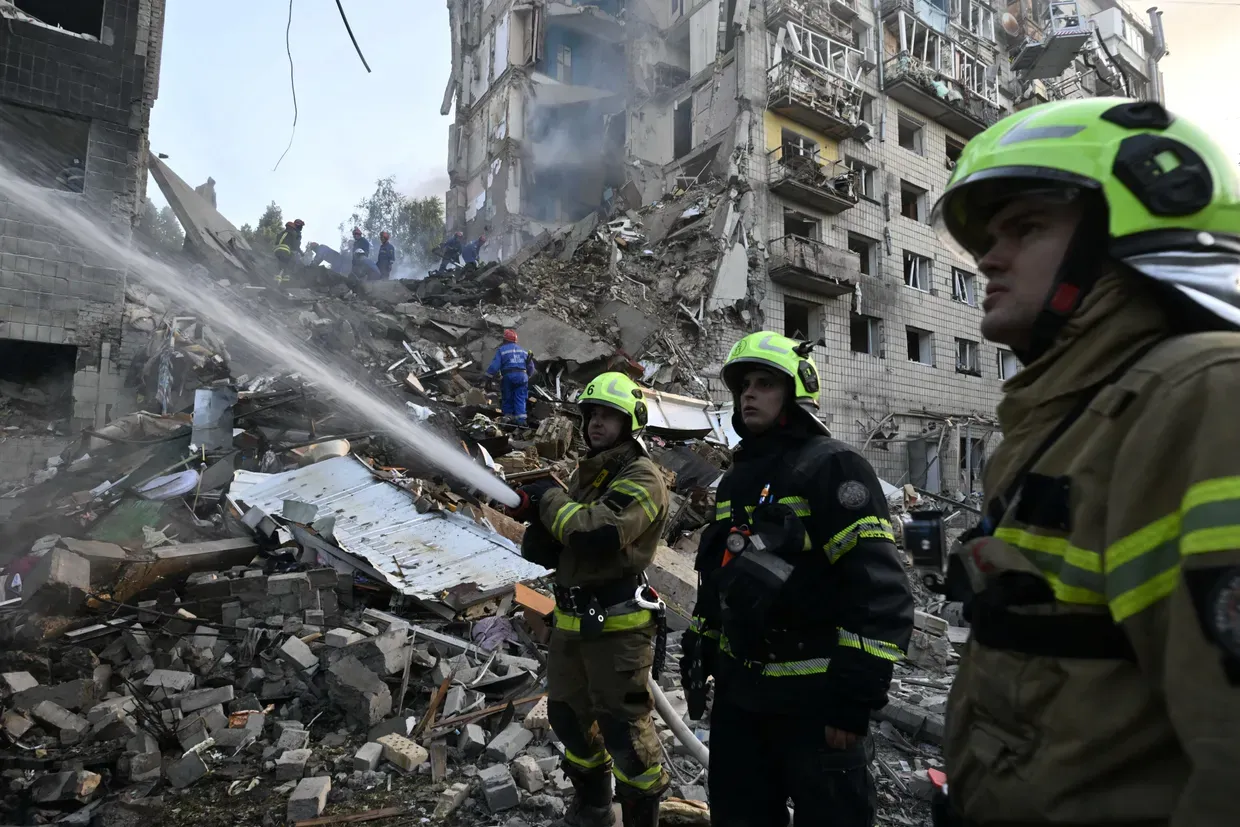
Firefighters extinguish burning parked cars next to a heavily damaged residential building following the Russian missile strike on Ukraine’s capital of Kyiv on June 17, 2025. (Genya Savilov / AFP via Getty Images) In a video posted on Telegram, Kyiv Mayor Vitali Klitschko said cluster munitions had been found in one area of the city. He later added that June 18 would be an official day of mourning in Kyiv.
Many of the deaths and injuries occurred when a Russian missile hit a nine-storey residential building in the Solomianskyi district, “completely destroying” one section, Ukraine’s State Emergency Service said.
“I saw the missile because it was low,” Olena Kushnirova, a 46-year-old nurse who lives in a neighboring building to the one that was hit, told the Kyiv Independent.
During the attack on the capital, a 62-year-old U.S. citizen died in the Solomianskyi district in a building across from where medics were assisting the injured, Klitschko reported. Medical personnel confirmed biological death.
Foreign Minister Andrii Sybiha also condemned the attack, calling it a “massive and brutal strike” timed deliberately to coincide with the G7 summit.
“Putin does this on purpose… He sends a signal of total disrespect to the United States and other partners who have called for an end to the killing,” Sybiha said. “Only strong steps and real pressure on Moscow can prove him wrong."
A Russian drone also hit a multi-storey building Darnytskyi District.
“At first there was shock,” Tatiana Bratus, a 50-year-old resident of the building, told the Kyiv Independent.
“People started running outside, shouting, some in panic, because the attack wasn’t over yet. They said there were still rockets flying. People ran to the bomb shelter.
A kindergarten in the Darnytskyi district was also damaged, Tymur Tkachenko, the head of the Kyiv City Military Administration, said. No casualties were reported at the site.
The upper floors of residential buildings in the Solomianskyi and Shevchenkivskyi districts were also damaged.
A dormitory at the Kyiv Aviation Institute was hit by drones during the attack, the news outlet Suspilne reported. Drones struck the institute’s 10th floor and broke windows on three other floors.
Outside the capital, the attacks also caused damage and injured civilians in Kyiv Oblast towns. At least one woman was injured and multiple homes were damaged, according to the regional administration.
The Russian strike damaged the production facility of Fahrenheit, a Ukrainian clothing manufacturer that supplies apparel and undergarments for both civilians and the military. The company announced it was forced to cancel all current orders and suspend new ones indefinitely following the destruction of its Kyiv site.
Russian forces also hit a Ukrainian Railways (Ukrzaliznytsia) freight train carrying grain. Several railcars overturned, temporarily halting operations and spilling grain from the damaged wagons. Ukrzaliznytsia said the damage would be "promptly repaired" and train traffic would not be affected.
Ukrposhta, Ukraine's national postal service, reported the destruction of two of its branches in Kyiv during the attack, according to CEO Ihor Smiliansky. The company's team is working to "quickly restore services," he said.
The attack followed a series of drone strikes overnight on June 16 targeting Kyiv Oblast, including both the capital and surrounding settlements. In the Obukhiv district, a 60-year-old man was injured, according to regional authorities.
Russian attacks against Ukraine have intensified in May and June, with Moscow launching several record-breaking mass strikes against Kyiv and other cities.
‘He said he wasn’t going anywhere’ — Russian strikes kill 14 in Kyiv as survivors search for missingSitting a few meters from the rubble of what used to be a nondescript nine-story residential building in Kyiv, Lilia rises to her feet every time another pile of debris is cleared from the site targeted by Russia during a mass overnight attack on June 17. “We are waiting (asThe Kyiv IndependentKateryna Denisova
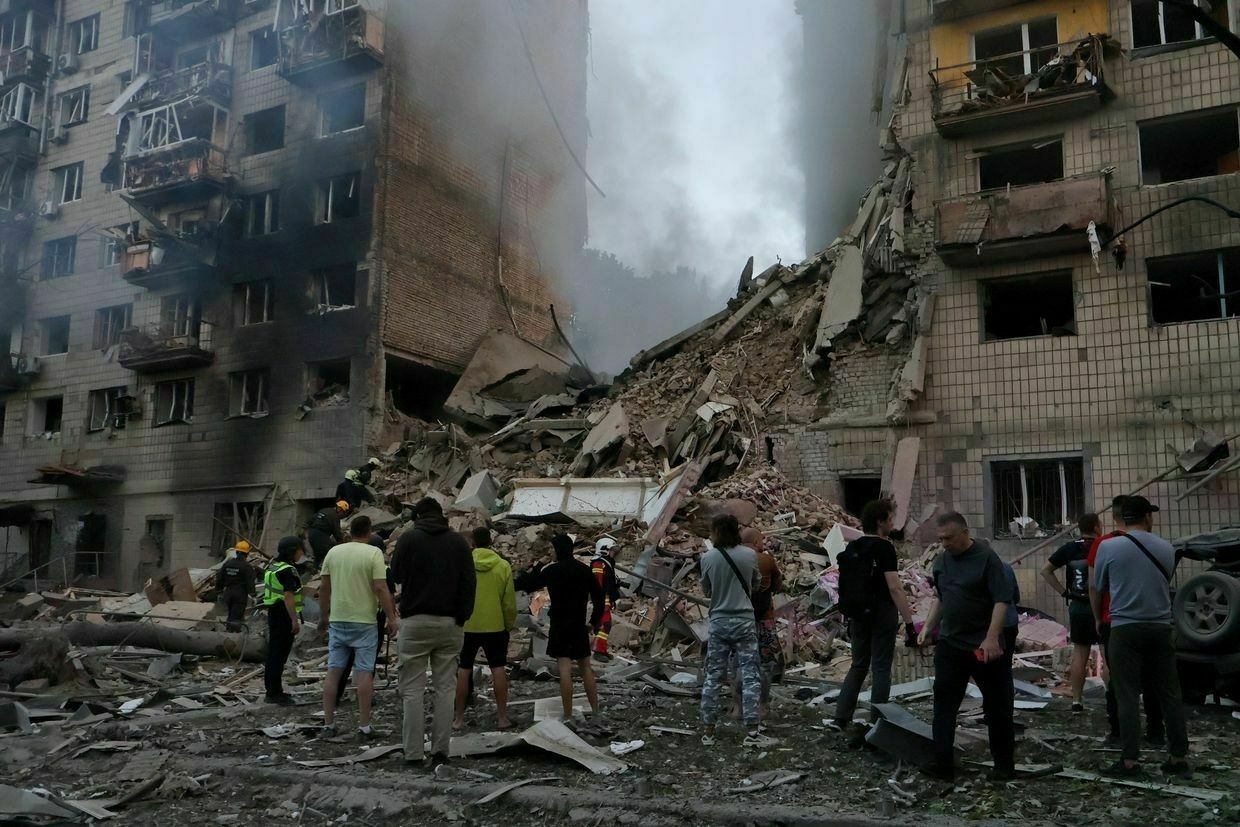
Zelensky arrives at G7 summit hours after Trump departsPresident Volodymyr Zelensky arrived at the G7 Leaders' Summit in Canada on June 17 ahead of the final day of the G7 Leaders' summit, according to a Kyiv Independent journalist on the ground.
Zelensky was greeted by Canadian Prime Minister Mark Carney in Kananaskis, Alberta, where the summit is being held.
"We need more from our allies... We are ready for peace negotiations... But for this, we need pressure," the Ukrainian president said.
The Ukrainian president was expected to meet U.S. President Donald Trump at the summit. However, it is not clear if the meeting will take place because Trump left the summit early due to escalating tensions in the Middle East.
White House spokesperson Caroline Leavitt confirmed Trump's early departure from the summit, citing the ongoing escalation between Israel and Iran.
Zelensky was to hold his third in-person meeting with Trump, which may signal the future of Trump and Zelensky's relationship, as well as offer insight into the United States' commitment to supporting Ukraine.
In February, Zelensky and Trump held their first meeting, which escalated into a heated argument, with Trump and Vice President JD Vance lambasting the Ukrainian leader over what they described as "a lack of gratitude for U.S. support."
The second meeting between Trump and Zelensky in the Vatican in April led to the U.S. president reiterating calls for a ceasefire in Ukraine and even threatening to impose sanctions on Russia.
In the month since their last in-person meeting, tensions between Trump and Zelensky have risen again. Despite issuing several threats, Trump has not followed through on implementing additional economic pressure on Moscow.
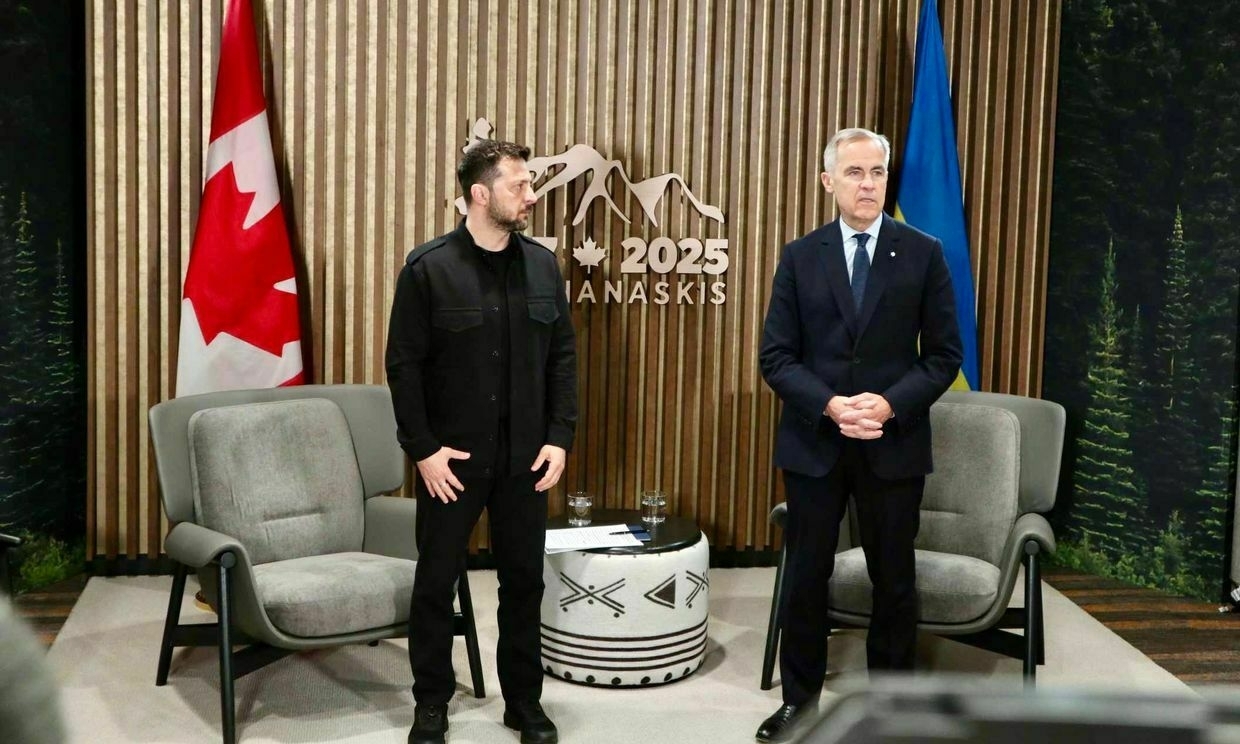
Canadian Prime Minister Mark Carney welcomes President Volodymyr Zelensky during the Group of Seven (G7) Summit in Kananaskis, Alberta, Canada on June 17, 2025. (Dmytro Basmat / The Kyiv Independent) Ahead of the summit, European leaders urged G7 nations to impose harsher sanctions on Moscow in order to secure a ceasefire in the war against Ukraine.
"To achieve peace through strength, we must put more pressure on Russia to secure a real ceasefire, to bring Russia to the negotiating table, and to end this war. Sanctions are critical to that end," European Commission President Ursula von der Leyen said on June 15 at a press briefing attended by a Kyiv Independent journalist.
Zelensky is still expected to attend the scheduled meetings with other G7 leaders.
Zelensky said in a closed-door meeting attended by the Kyiv Independent on June 13 that his priority is to speak with Trump about sanctions against Russia, peace talks, weapons purchases, and U.S.-Ukraine economic cooperation.
"There are steps forward we can take — but we need the political will of the U.S. president, if he wants," Zelensky said on June 13.
Amid increased anxiety around Trump's commitment to ending the war, U.S. Defense Secretary Pete Hegseth recently announced that the Pentagon would reduce funding allocated for military assistance to Ukraine in its 2026 defense budget.
Canada, which holds the G7 presidency in 2025, invited Zelensky to participate in summit, marking the Ukrainian president's fourth G7 meeting since the outbreak of the full-scale invasion in 2022.
Tired of military aid delays, Ukraine has designed its own ballistic missile — and it’s already in mass-productionUkraine announced on June 13 that its short-range Sapsan ballistic missile would go into mass production, a major development in Kyiv’s ongoing efforts to domestically produce the weapons it needs to fight Russia’s full-scale invasion. As Ukraine faces growing challenges in securing weapons from Western partners, and Russia continues launchingThe Kyiv IndependentYuliia Taradiuk
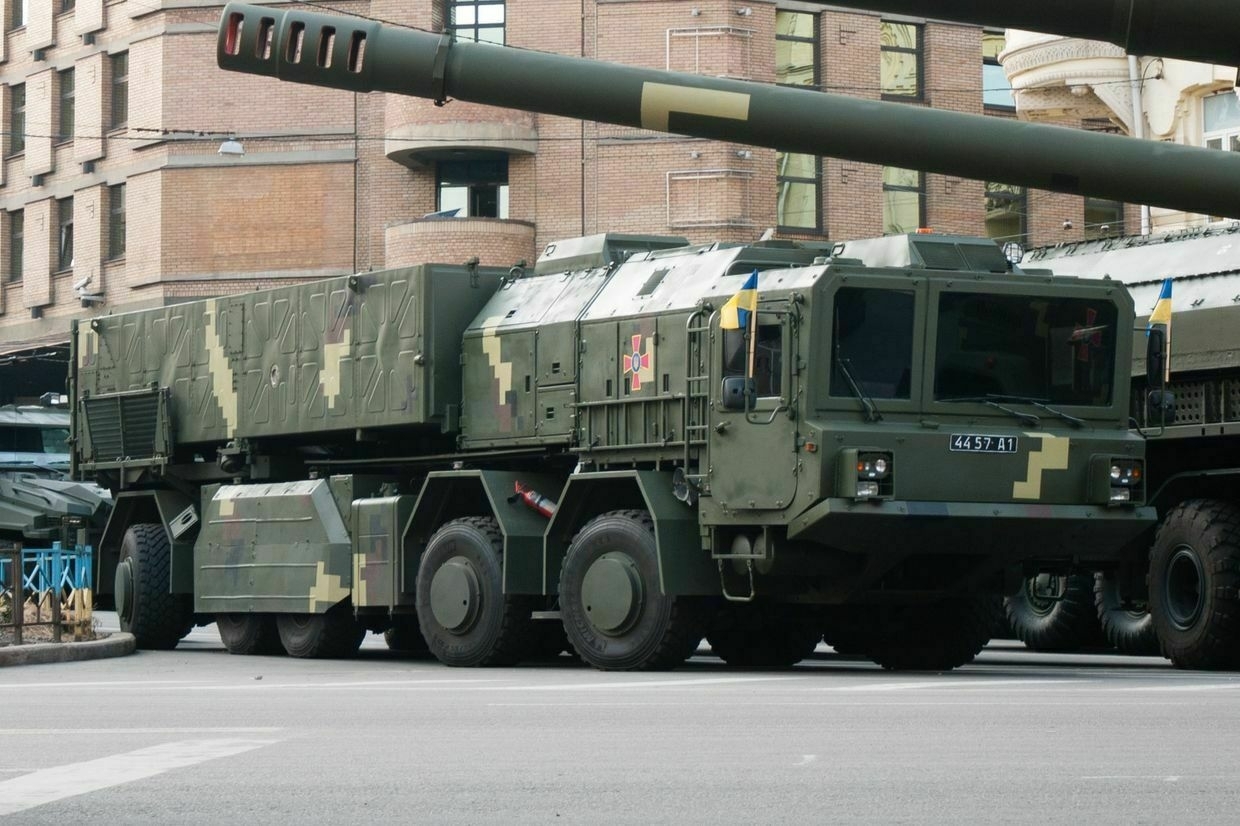
US group designed to pressure Russia disbanded by Trump administration, Reuters reportsA U.S. government working group that formulated strategies for pressuring Russia into peace talks and ending the war in Ukraine has been disbanded by the White House, Reuters reported on June 17.
Officials cited by the news outlet said it was established this spring but became increasingly irrelevant as it became clear U.S. President Donald Trump wasn't willing to apply any concrete pressure on Moscow during peace talks.
"It lost steam toward the end because the president wasn't there. Instead of doing more, maybe he wanted to do less," an anonymous official said.
As Ukraine and the U.S. continue to push for an unconditional ceasefire, Russia has maintained maximalist demands and rejected all such proposals.
At the same time, it has escalated attacks on Ukrainian civilians, killing at least 15 people and injuring scores of others in the latest attack on Kyiv overnight on June 17.
Trump has expressed frustration with Moscow's intransigence and growing violence but has yet to impose any new sanctions on Russia.
On June 1,6 while speaking in Canada ahead of a G7 summit, Trump said barring Russia from the G8 for its invasion of Ukraine in 2017 had been a "mistake."
According to Reuters, the working group, staffed by officials from the National Security Council, State Department, Treasury Department, the Pentagon and intelligence community, was decimated in a purge of personnel around three weeks ago.
Trump pledged to "stop the wars" when he was elected U.S. president for the second time, but after just five months in office, the world is a far more violent place.
As well as Russia escalating attacks on Ukraine, Israel and Iran are now locked in a conflict that further threatens stability in the Middle East.
‘Beyond cynical’ – Russian doctor carved ‘Glory to Russia’ scar on POW during operation, Ukraine saysAfter more than three years of Russia’s full-scale invasion, each new revelation of cruel treatment of Ukrainians in Russian captivity hardly surprises anyone. But when a photo recently emerged online, showing a “Glory to Russia” scar on the body of a Ukrainian prisoner of war (POW), it sent shockwavesThe Kyiv IndependentDaria Shulzhenko

US reportedly considers strikes on Iran as Trump demands 'unconditional surrender'U.S. President Donald Trump is weighing direct military action against Iran, including potential strikes on its nuclear facilities, Axios reported on June 17, citing unnamed U.S. officials.
Trump demanded Iran's "unconditional surrender" on Truth Social on June 17 and threatened Supreme Leader Ayatollah Ali Khamenei, boasting about U.S. air superiority.
The U.S. president is expected to meet with his national security team later in the day to determine the scope of involvement in the escalating conflict between Israel and Iran, according to Axios.
The meeting comes after his early departure from the G7 Leaders' Summit on June 16, where he had been scheduled to meet with President Volodymyr Zelensky the following day.
"We now have complete and total control of the skies over Iran," Trump wrote on Truth Social.
He added that "we know exactly where the so-called 'Supreme Leader' is hiding."
"He is an easy target, but is safe there - We are not going to take him out (kill!), at least not for now," Trump continued. "But we don't want missiles shot at civilians, or American soldiers. Our patience is wearing thin."
The U.S. president is increasingly leaning toward using military force to target Iran's nuclear facilities, moving away from a diplomatic resolution, CNN reported, citing two unnamed U.S. officials.
Although Trump continues to be receptive to negotiations, CNN sources indicated that any agreement would require significant concessions from Tehran.
German Chancellor Friedrich Merz said on June 17 that U.S. involvement in Israel's military campaign is under serious consideration, and a decision could be "made in the near future," Politico reported.
Merz said the decision depends on whether the Iranian regime "is prepared to return" to the negotiating table.
Israel-Iran war could provide economic boost Russia needs to continue fight against UkraineIsrael’s “preemptive” strikes against Iran targeting the country’s nuclear program and killing top military officials could have far-reaching implications for Ukraine and could boost Russia’s ability to continue its full-scale invasion, experts have told the Kyiv Independent. Iran has been one of Russia’s staunchest allies throughout the war, providing thousandsThe Kyiv IndependentChris York
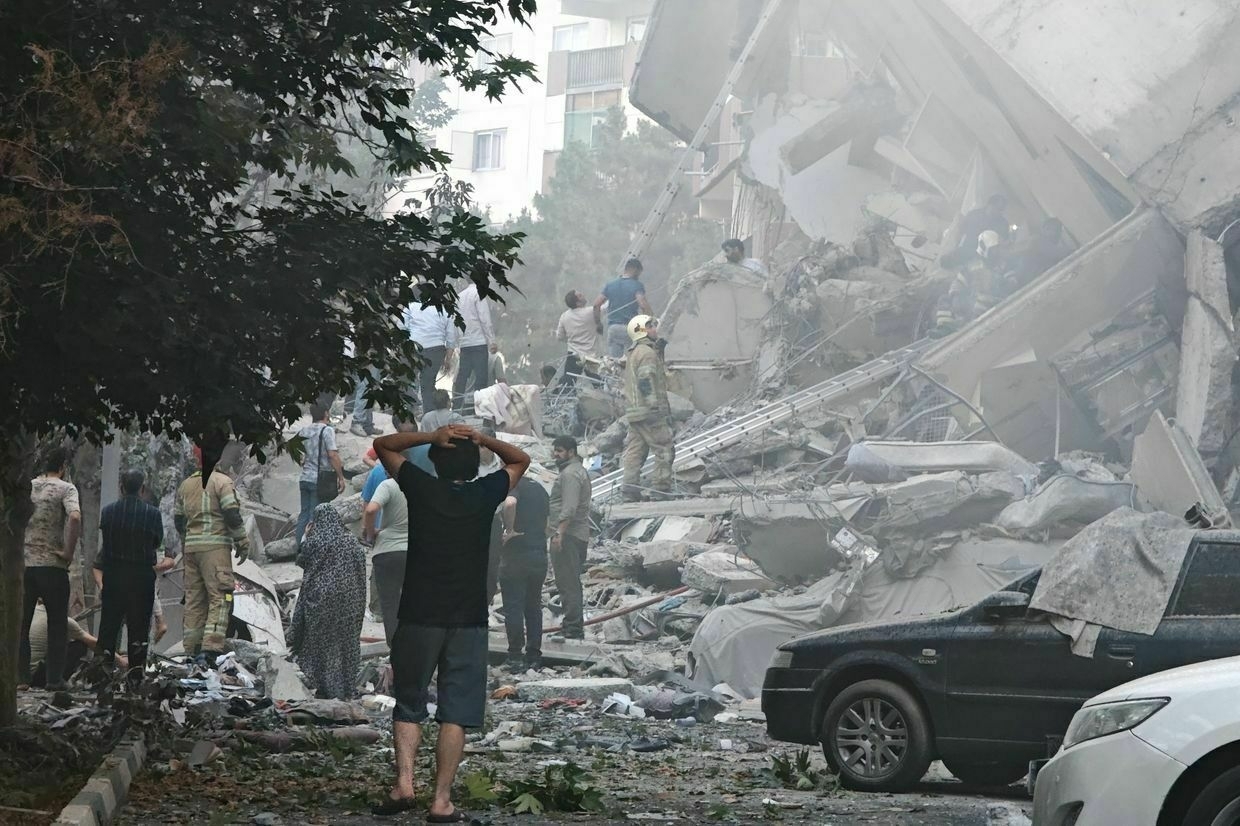
Israel launched a series of massive air strikes on Iran starting June 13, targeting nuclear facilities and senior military figures. The Israeli government claimed Tehran was nearing nuclear weapons capability.
Iran responded with missile strikes on Tel Aviv and other Israeli cities, which resulted in civilian casualties, including five Ukrainian citizens, on June 14.
Iranian officials claimed 224 people have been killed in Israeli attacks so far, most of them civilians. The figures have not been independently verified.
As tensions grow, Trump has floated the idea of Russian President Vladimir Putin serving as a mediator between Israel and Iran. Putin spoke with both Iranian President Masoud Pezeshkian and Israeli Prime Minister Benjamin Netanyahu on June 13, offering mediation and condemning Israeli strikes.
Israel has not publicly responded to Russia's proposal, but Kremlin spokesperson Dmitry Peskov said on June 17 that Tel Aviv appeared unwilling to accept Russian mediation.
French President Emmanuel Macron dismissed the suggestion entirely, saying on June 15 that Moscow, given its war in Ukraine and disregard for the UN Charter, "cannot be a mediator."
Tehran has become one of Russia's closest military partners during its war against Ukraine, supplying thousands of Shahed drones and ballistic missiles used in daily strikes on Ukrainian cities.
Israel, which has historically maintained careful relations with Russia and is home to a substantial Russian-speaking population, has not joined in Western sanctions against Moscow.
On June 13, Kyiv expressed its support for Israel, describing Iran as a "source of instability in the region and beyond," citing Tehran's extensive military cooperation with Russia.
Israel reluctant to accept Russia’s mediation in war with Iran, Kremlin says“At the moment, we see reluctance — at least on Israel’s part — to resort to mediation or pursue a peaceful resolution,” Kremlin spokesman Dmitry Peskov claimed.The Kyiv IndependentTim Zadorozhnyy
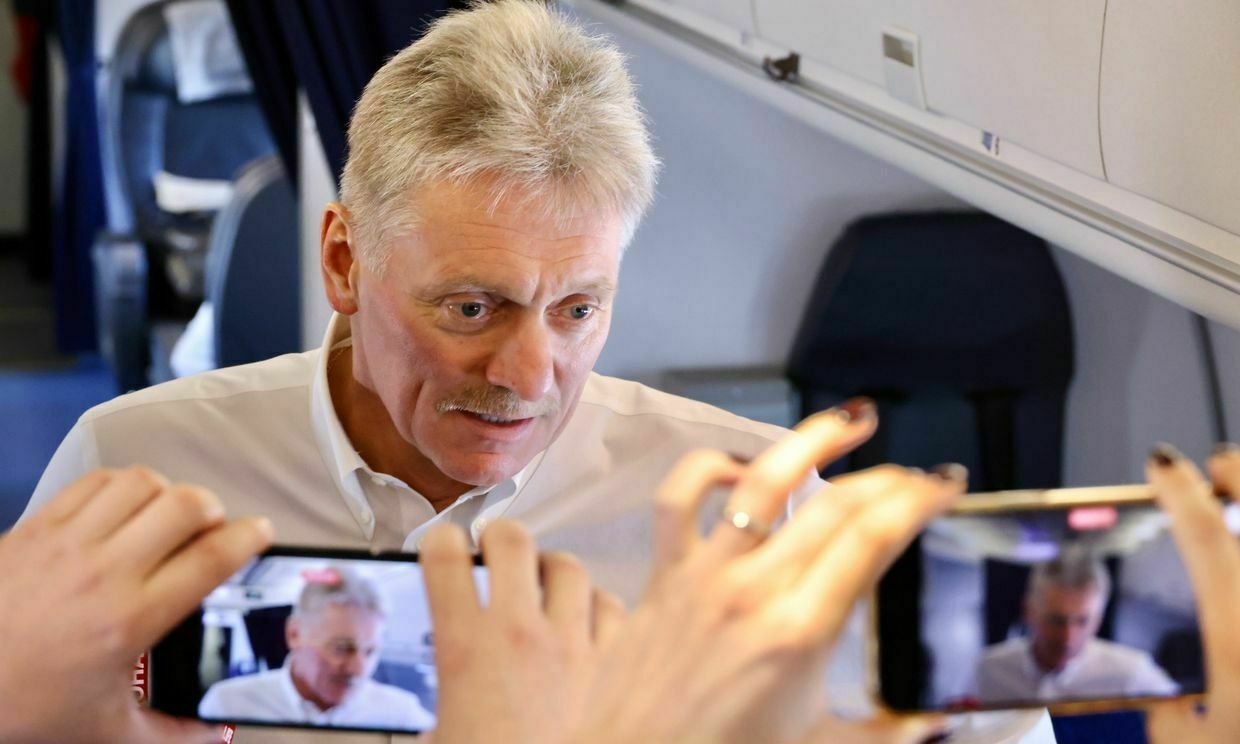
Russian chemical plant halts operations after Ukrainian drone strikeThe Nevinnomyssk Azot chemical plant — one of Russia's largest producers of nitrogen fertilizer and ammonia and a key supplier to the Kremlin's military-industrial complex — has suspended production, Russian independent media outlet Astra reported on June 16.
According to Astra, the chemical plant suspended production as a direct result of Ukrainian drone strikes. The strike — which was confirmed by Ukraine's General Staff on June 14 — targeted two major military-industrial facilities in Russia, including the Nevinnomyssk Azot plant in Stavropol Krai. The facility reportedly supplied raw materials and components for Russia's weapons and fuel production.
Nevinnomyssk Azot is among Russia's top producers of ammonia and nitrogen fertilizers and hosts the country's only production lines for methyl acetate and high-purity acetic acid. It also operates Russia's first melamine production facility, according to open-source data.
According to Andrii Kovalenko, head of Ukraine's Center for Countering Disinformation at the National Security and Defense Council, the plant produces up to one million tons of ammonia and over one million tons of ammonium nitrate annually, and is "a critical element of Russia's military-industrial complex."
Kovalenko noted that ammonium nitrate is a key component for explosives and artillery shells. He added that the plant also synthesizes dual-use chemicals such as melamine, acetic acid, methanol, and potassium nitrate — all frequently used in the production of grenade launchers, mines, and rocket charges.
Since 2024, the plant has also been producing water-soluble fertilizers, which he said have been adapted to serve military chemical needs as part of Russia's war in Ukraine.
The chemical plant is part of the EuroChem Group, owned by Russian billionaire Andrey Melnichenko, who is currently sanctioned by Canada, the European Union, Japan, and the United Kingdom.
Note from the author:
Ukraine War Latest is put together by the Kyiv Independent news desk team, who keep you informed 24 hours a day, seven days a week. If you value our work and want to ensure we have the resources to continue, join the Kyiv Independent community.
-
86th Battalion joins Da Vinci Regiment
It has recently been revealed that a transfer has taken place within the Ukrainian Armed Forces: the 86th Territorial Defense Battalion has officially joined the 1st Assault Regiment ‘Da Vinci’…
-
One of the MOST massive attacks: Zelenskyy commented on the night attack on Ukraine #shorts
-
US reportedly considers strikes on Iran as Trump demands 'unconditional surrender'
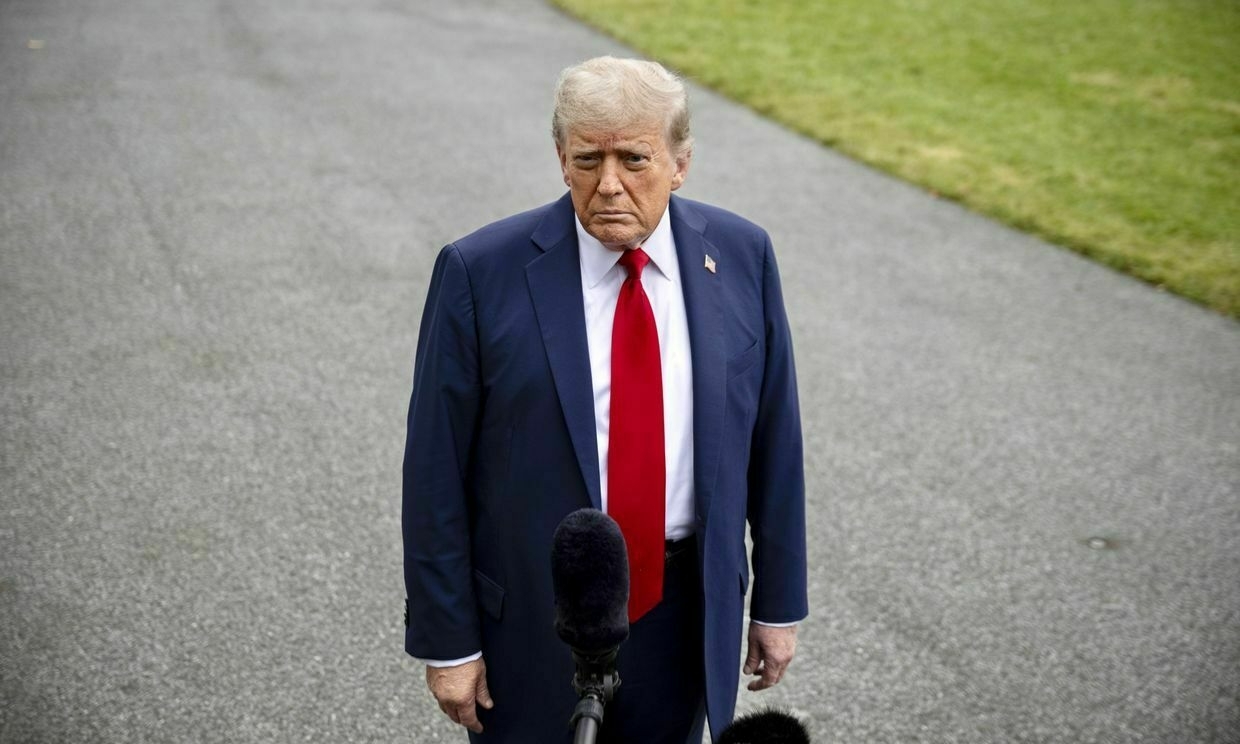
U.S. President Donald Trump is weighing direct military action against Iran, including potential strikes on its nuclear facilities, Axios reported on June 17, citing unnamed U.S. officials.
Trump demanded Iran’s “unconditional surrender” on Truth Social on June 17 and threatened Supreme Leader Ayatollah Ali Khamenei, boasting about U.S. air superiority.
Trump is expected to meet with his national security team later in the day to determine the scope of U.S. involvement in the escalating conflict between Israel and Iran, according to Axios.
The meeting comes after his early departure from the G7 Leaders' Summit on June 16, where he had been scheduled to meet with President Volodymyr Zelensky the following day.
“We now have complete and total control of the skies over Iran,” Trump wrote on Truth Social.
He added that “we know exactly where the so-called ‘Supreme Leader’ is hiding."
“He is an easy target, but is safe there - We are not going to take him out (kill!), at least not for now,” Trump continued. “But we don’t want missiles shot at civilians, or American soldiers. Our patience is wearing thin."
German Chancellor Friedrich Merz said on June 17 that U.S. involvement in Israel’s military campaign is under serious consideration, and a decision could be “made in the near future,” Politico reported.
Merz said the decision depends on whether the Iranian regime “is prepared to return” to the negotiating table.
Israel launched a series of massive air strikes on Iran starting June 13, targeting nuclear facilities and senior military figures. The Israeli government claimed Tehran was nearing nuclear weapons capability.
Iran responded with missile strikes on Tel Aviv and other Israeli cities, which resulted in civilian casualties, including five Ukrainian citizens on June 14.
Iranian officials claimed 224 people have been killed in Israeli attacks so far, most of them civilians. The figures have not been independently verified.
As tensions grow, Trump has floated the idea of Russian President Vladimir Putin serving as a mediator between Israel and Iran. Putin spoke with both Iranian President Masoud Pezeshkian and Israeli Prime Minister Benjamin Netanyahu on June 13, offering mediation and condemning Israeli strikes.
Israel has not publicly responded to Russia's proposal, but Kremlin spokesperson Dmitry Peskov said on June 17 that Tel Aviv appeared unwilling to accept Russian mediation.
French President Emmanuel Macron dismissed the suggestion entirely, saying on June 15 that Moscow, given its war in Ukraine and disregard for the UN Charter, "cannot be a mediator."
Tehran has become one of Russia's closest military partners during its war against Ukraine, supplying thousands of Shahed drones and ballistic missiles used in daily strikes on Ukrainian cities.
Israel, which has historically maintained careful relations with Russia and is home to a substantial Russian-speaking population, has not joined in Western sanctions against Moscow.
On June 13, Kyiv expressed its support for Israel, describing Iran as a "source of instability in the region and beyond," citing Tehran's extensive military cooperation with Russia.
Zelensky arrives at G7 summit hours after Trump departsZelensky was expected to meet U.S. President Donald Trump at the summit. However, it is not clear if the meeting will take place because Trump left the summit early due to escalating tensions in the Middle East.The Kyiv IndependentDmytro Basmat

-
‘He said he wasn’t going anywhere’ — Russian strikes kill 14 in Kyiv as survivors search for missing
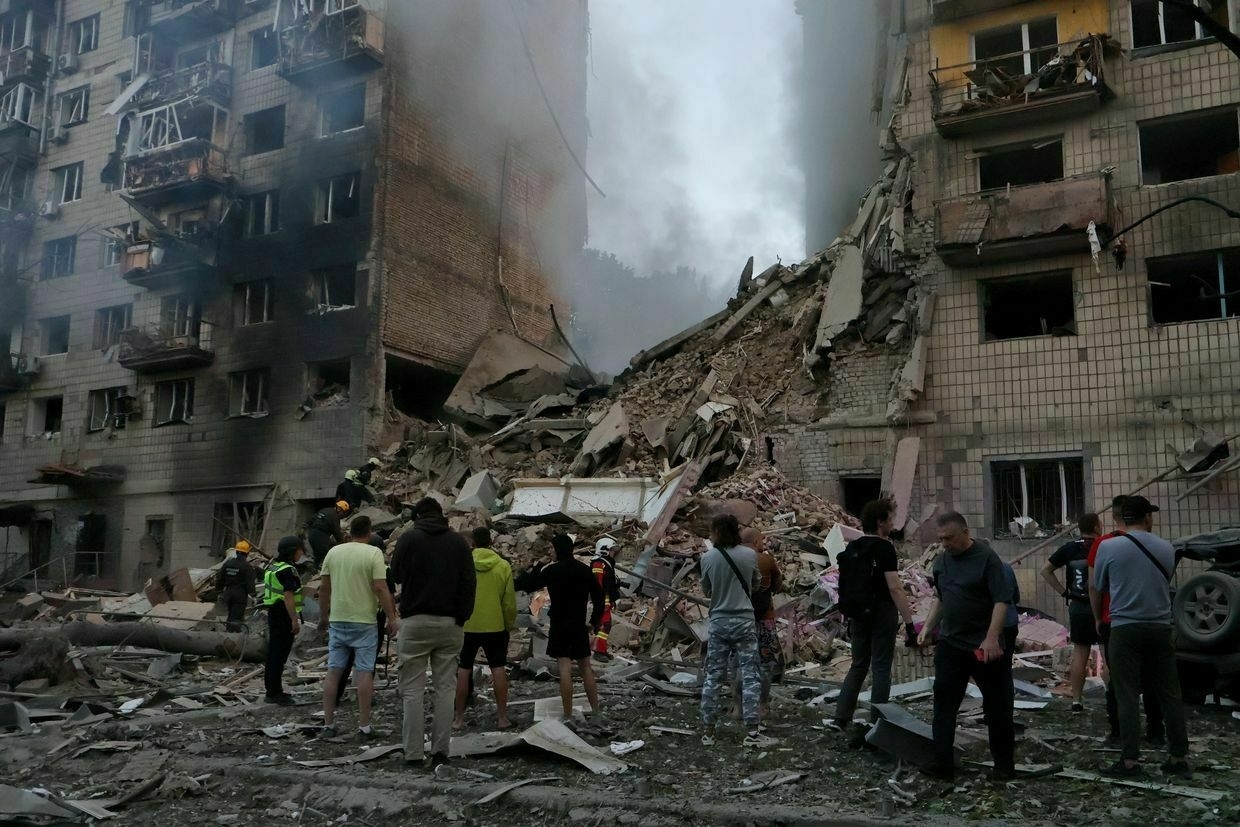
Sitting a few meters from the rubble of what used to be a nondescript nine-story residential building in Kyiv, Lilia rises to her feet every time another pile of debris is cleared from the site targeted by Russia during a mass overnight attack on June 17.
“We are waiting (as everyone) for the same thing,” says Victoria Smirnova, 37, Lilia’s mother-in-law, seated nearby. “The father was there."
The man’s third-floor apartment and the entire section of the building in the capital’s Solomianskyi district had completely collapsed.
“She (Lilia) ran to him after the first wave of drone attacks,” Smirnova told the Kyiv Independent. “He was cleaning up broken glass. The windows in the kitchen and on the balcony were shattered. He told her, ‘I’ll be home, there’s so much to do. I’ll stay in the corridor. I’m not going anywhere.'"
Minutes after Lilia left, a Russian cruise missile struck the building.The two women are among many waiting near the site, desperate for news about family members and acquaintances still missing in the aftermath of the overnight strike, the deadliest attack on Kyiv since the start of the year.
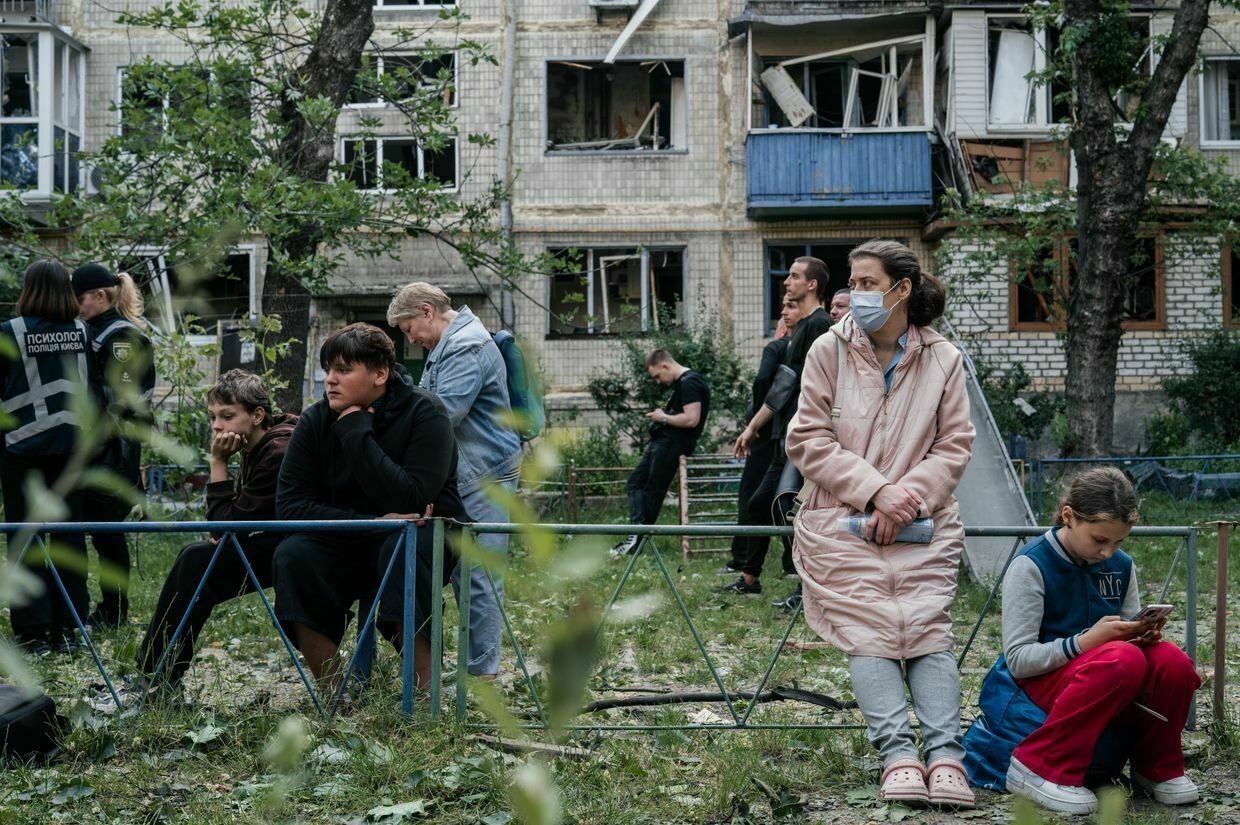
Residents evacuate a damaged apartment building after a Russian drone and missile attack in Kyiv, Ukraine, on June 17, 2025. (Vlada Liberova / Libkos / Getty Images) 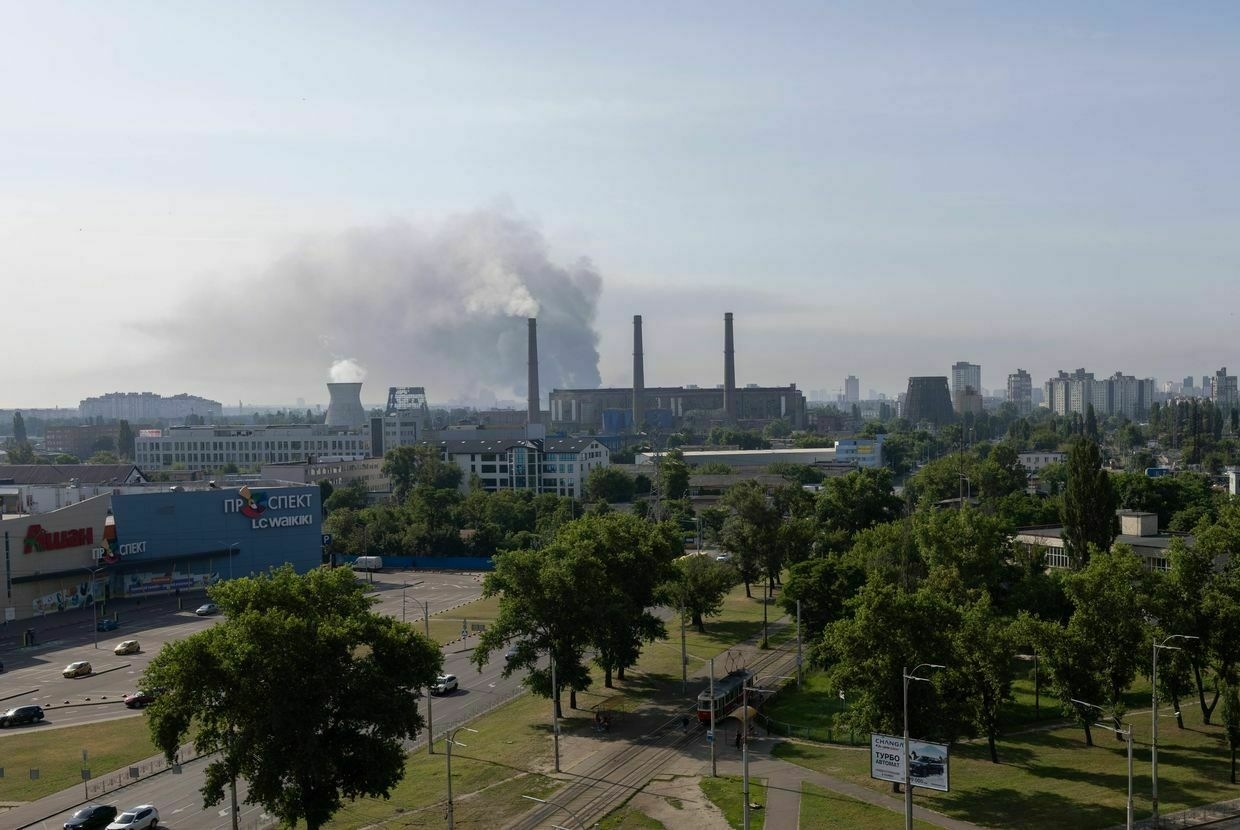
Smoke rises over Kyiv, Ukraine, after a combined Russian drone and missile attack on June 17, 2025. (Anna Donets / The Kyiv Independent) At least 14 people were killed in the capital, and 117 others were injured, according to officials. Two more people were killed in a Russian overnight attack on the southern city of Odesa.
Ukraine’s Air Force said Russia launched 472 aerial weapons overnight, including nearly 280 Shahed-type drones and 32 missiles. The strikes were primarily aimed at Kyiv.
Air defense forces intercepted 428 of those targets, including 239 Shahed drones, one Kinzhal ballistic missile, and 23 cruise missiles.
Mayor Vitali Klitschko also reported that Russian forces used cluster munitions during the attack.
Witnesses said the attack came in several waves — first drones, then missiles, then drones again. After the initial barrage, a lull in the strikes prompted some residents to leave their shelters.
Among them were Halyna Kushnirova, 72, and her son. They had just stepped outside when fresh explosions rocked the district. This time, they took cover in an underground passageway near their home.
"I'm in shock. I still can't fully grasp that this actually happened. I mean, I see it, but I can't process it.”
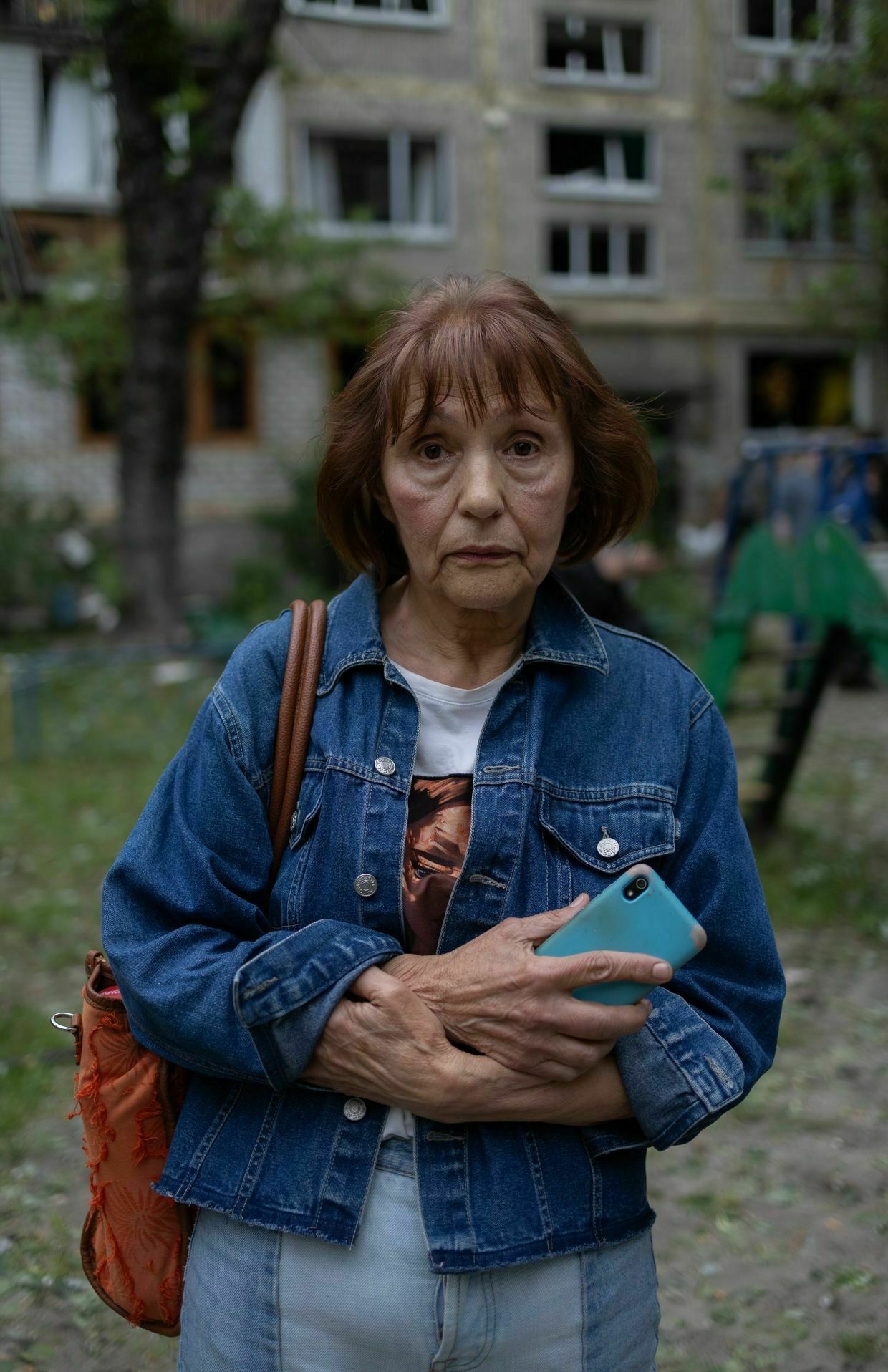
Halyna Kushnirova, 72, a retiree who lives in the house struck by a Russian missile, stands outside the damaged building in Kyiv, Ukraine, on June 17, 2025. (Anna Donets / The Kyiv Independent)
"Then there was this terrible whistling. It was horrible. Three missiles — with such a noise that my ears were ringing," Kushnirova said. "The explosion was so strong that dust, smoke, and sparks filled the passageway."
"I said immediately: it's our building (that was hit)."
She said her apartment, located in a neighboring section of the building, was heavily damaged.
The attack left a trail of destruction across Kyiv, damaging multiple residential buildings in several districts, along with critical infrastructure, a kindergarten, a student dormitory, and cars.
Russia launched its latest strike as the G7 summit was underway in Canada. On the day of the attack, President Volodymyr Zelensky was expected to meet with his U.S. counterpart, Donald Trump. However, the American president left the summit a day before the meeting.
Trump has declined to comment on the attack and refrained from criticizing the Russian regime.
"I'm in shock. I still can't fully grasp that this actually happened. I mean, I see it, but I can't process it," Kushnirova said. "I wish Trump were here next to me to see what his buddy (Russian President Vladimir) Putin is doing."
‘A brutal strike’ — Massive Russian missile and drone attack hits Kyiv, killing 10, injuring at least 124Russian drones and ballistic missiles targeted the capital overnight, killing 15 people and injuring at least 114, local authorities reported. Damage to civilian infrastructure has also been reported throughout the city.The Kyiv IndependentOlena Goncharova
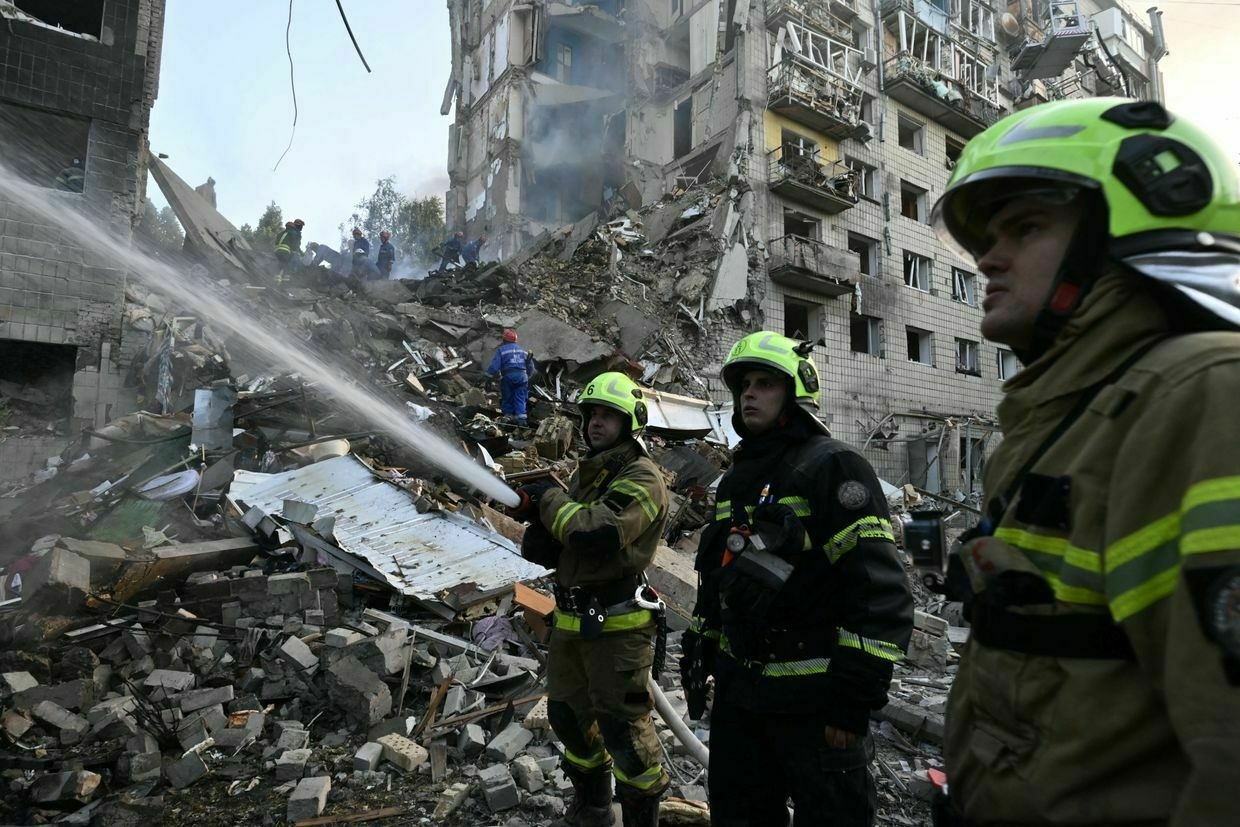
Escaping the worstOn the opposite side of the city, residents of Kyiv's left bank Darnytskyi district were also wrestling with the aftermath of the Russian attack.
Around 5 a.m., a Russian drone slammed into one of the high-rise apartment buildings. The strike left several people wounded, destroying an outer wall and rooms in several apartments and shattering windows throughout the neighborhood.
"My children were already in the bathroom. (My wife and I) were in the corridor. We heard the Shahed's descent, then the hit," said Ivan Serebrianskyi, 42, an entrepreneur who lives in the damaged building.
"The windows were shattered, and smoke covered the place. We went outside and checked that everyone in the family was alive and well. It's the main thing," he told the Kyiv Independent outside his entrance as the residents cleared up the driveway.
Serebrianskyi added that after the overnight attack, he wants his four and 13-year-old daughters to move abroad "within a few days."
"The worst part is that we can't plan at all for when it might end," Serebrianskyi said.
"Perhaps there will be a world leader other than our president who will be able to take a serious stance with this crazy neighbor of ours."
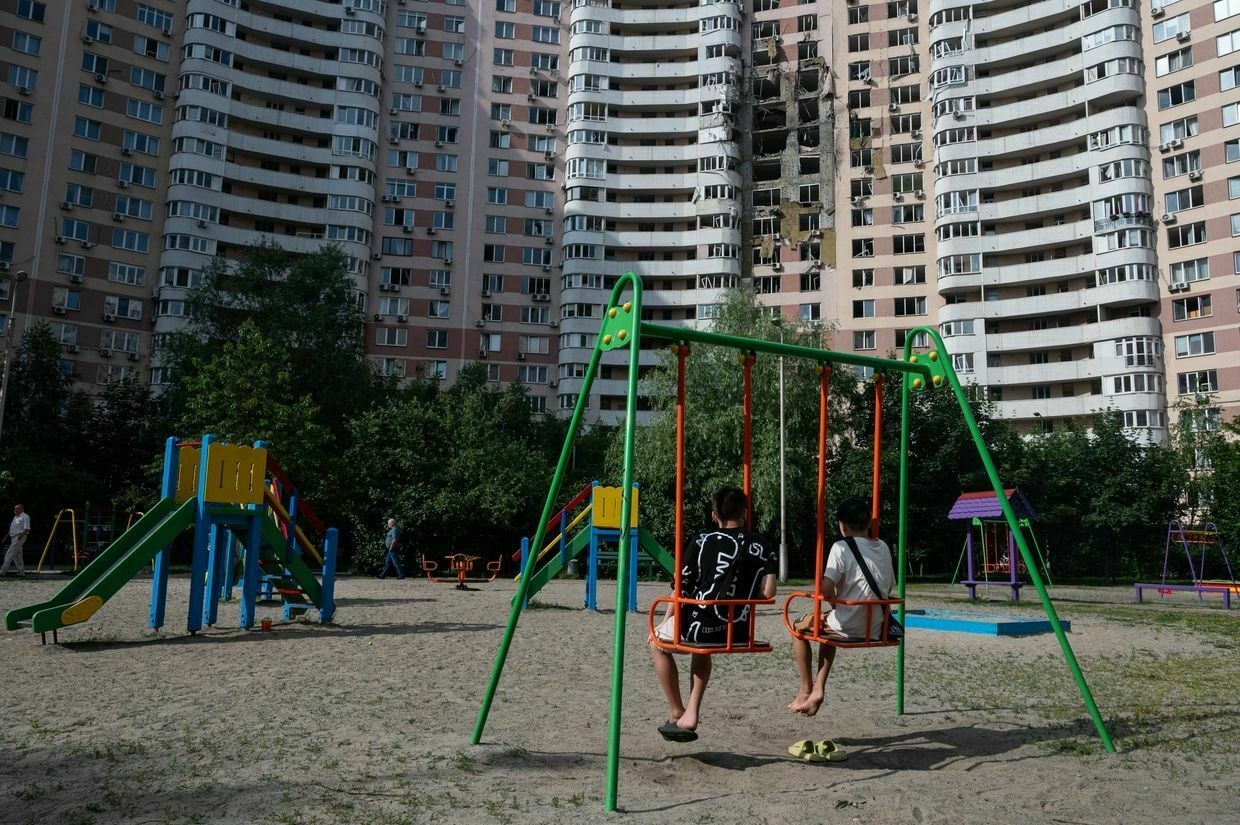
Children play near a residential building damaged by a Russian attack in Kyiv, Ukraine, on June 17, 2025. (Danylo Antoniuk / Anadolu via Getty Images) 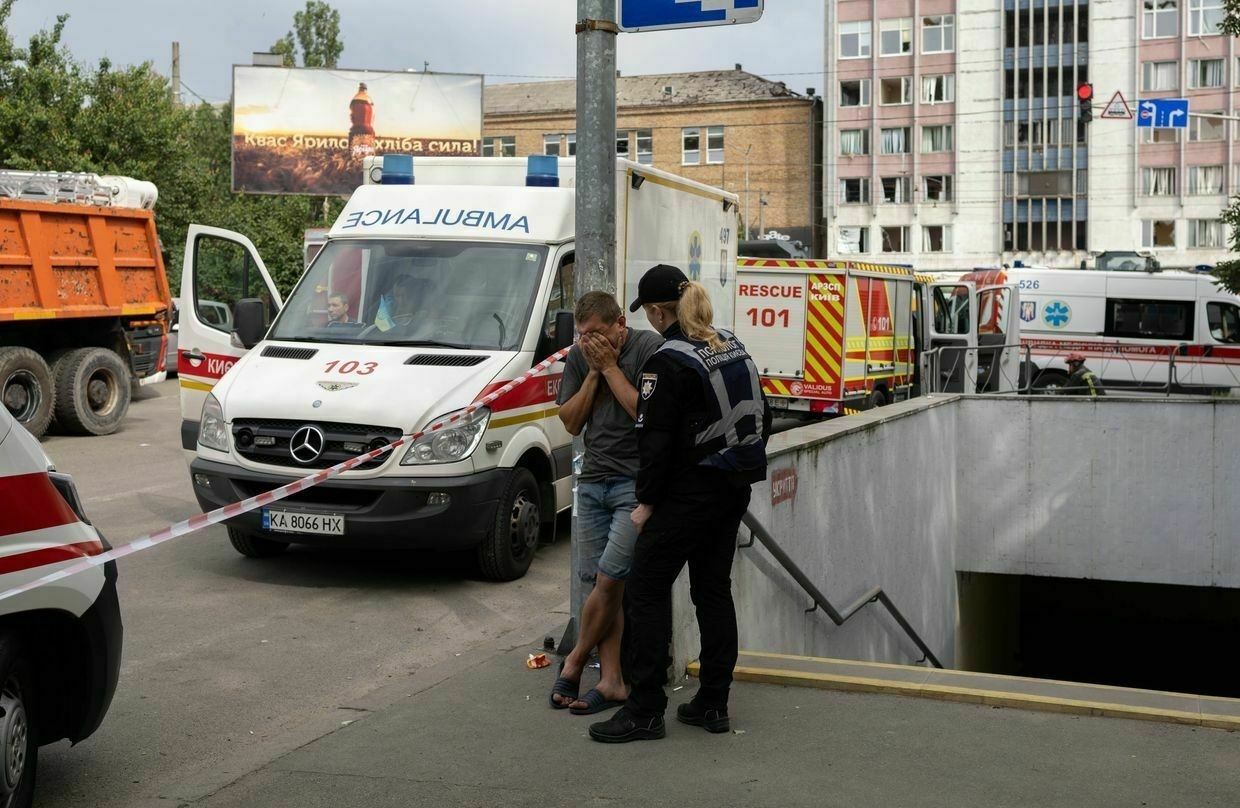
A man cries near the house that was struck by a Russian missile in Kyiv, Ukraine, on June 17, 2025. (Anna Donets / The Kyiv Independent) Serebrianskyi added that he was amazed at Trump's meek position in the peace talks with Russia.
"I run a small business myself, but I can say 100% that not everything in business can be solved by negotiation. Sometimes you need radical changes," he said.
Having escaped the worst, some residents of the Darnytskyi district started clearing up the debris almost immediately after the impact.
"Literally half an hour (after the attack), we started clearing up our entrance. Shattered common doors, window frames, glass," said Tatiana Bratus, 50, a building resident whose car was damaged in the attack.
In the late afternoon, Bratus and other residents who worked to clear the aftermath of the strike were joined by unlikely volunteers.
Around a dozen kids from nearby houses were sweeping up glass and litter off the sidewalk in front of the building, having procured brooms and scoops from the neighbors.
When asked by the Kyiv Independent's reporters why the children were cleaning up, one of the boys in the group responded: "Because it must be done."
Natalia, 28, a resident of a nearby building who declined to share her last name, said that she came to help with her friend's children, aged 10 and 12. The children volunteered to help after they read in the local volunteer group about the need for helpers at the location.
"The rest were just a group of kids playing around," Natalia said. "They approached us and said they wanted to help. We were not banned from it, so it seems safe here."
"No one forced them," Natalia added. "The nation is growing up strong. They are not going to look past the troubles of others."
‘Beyond cynical’ – Russian doctor carved ‘Glory to Russia’ scar on POW during operation, Ukraine saysAfter more than three years of Russia’s full-scale invasion, each new revelation of cruel treatment of Ukrainians in Russian captivity hardly surprises anyone. But when a photo recently emerged online, showing a “Glory to Russia” scar on the body of a Ukrainian prisoner of war (POW), it sent shockwavesThe Kyiv IndependentDaria Shulzhenko

-
20 people injured in Kherson as Russia shifts drone attack tactics, governor says
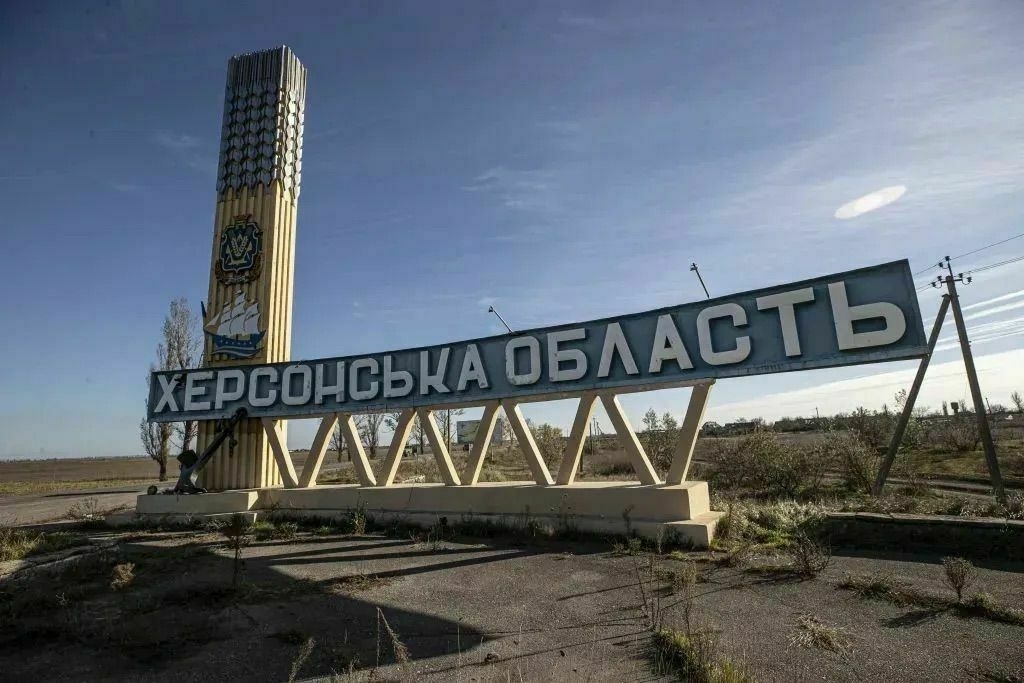
Russian drone attacks injured at least 20 civilians in the Dniprovskyi district of Kherson on June 17, according to local authorities.
“The Russians have changed their tactics for using drones — since early morning, they have been launching massive attacks on the Dniprovskyi district of Kherson,” Kherson Oblast Governor Oleksandr Prokudin wrote on Telegram.
The attacks left several people hospitalized with blast trauma and shrapnel wounds.
A 36-year-old man sustained injuries to the head and chest. A 51-year-old woman was treated for a concussion and facial wounds. Four other victims, including two women aged 60 and 67, were hospitalized with injuries to the torso and limbs.
Among those treated on an outpatient basis was a 41-year-old man wounded in the leg and a 58-year old woman who suffered injuries to the torso. Additional outpatient cases include women aged 84, 50, and 62, and a 58-year-old man, who was also admitted for hospital care.
“We are taking all necessary measures to counter enemy drones and adapting to the enemy’s new tactics. This takes time,” Prokudin said, urging residents to stay indoors unless absolutely necessary.
Kherson, located on the western bank of the Dnipro River in southern Ukraine, has faced relentless Russian attacks since its liberation in November 2022.
Russian forces continue to occupy the eastern bank, from which they launch attacks on civilian targets using artillery, guided bombs, and drones.
‘A brutal strike’ — Massive Russian missile and drone attack hits Kyiv, killing 10, injuring at least 124Russian drones and ballistic missiles targeted the capital overnight, killing 15 people and injuring at least 114, local authorities reported. Damage to civilian infrastructure has also been reported throughout the city.The Kyiv IndependentOlena Goncharova
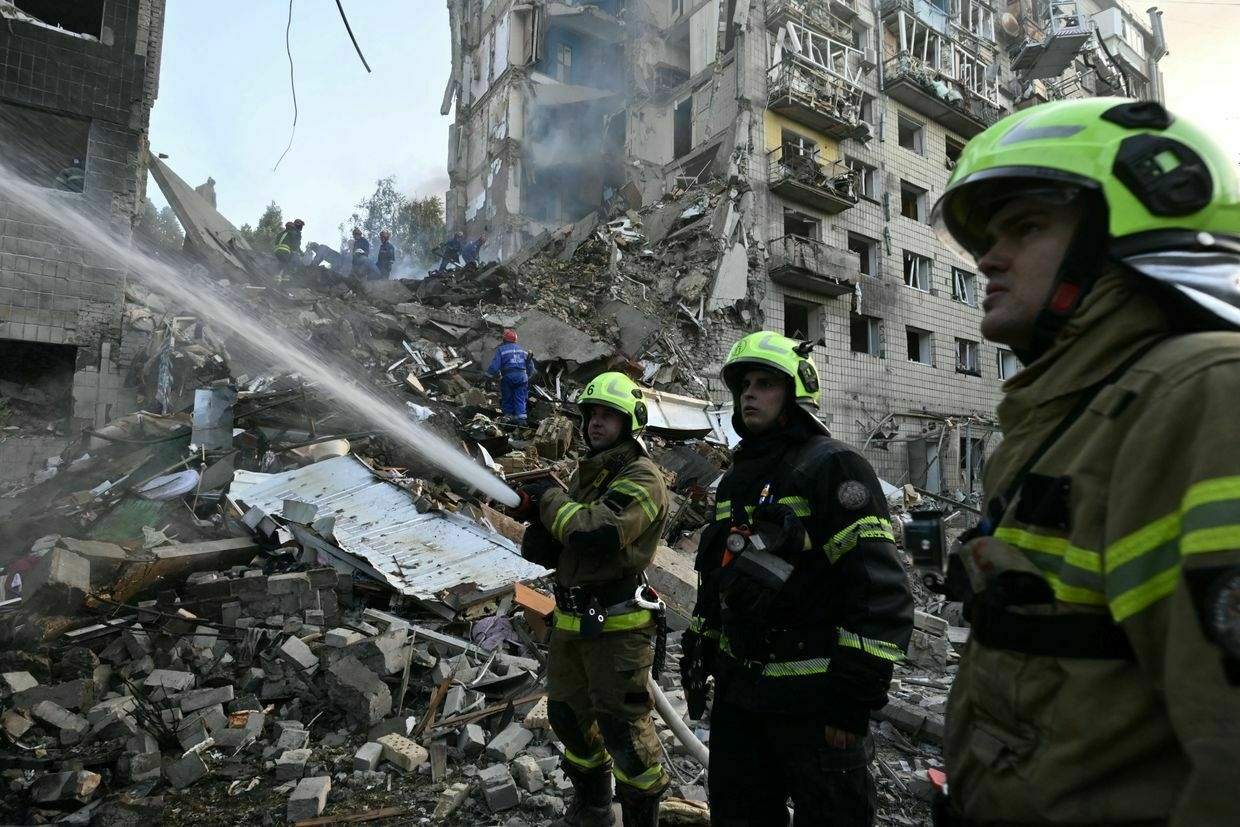
-
Ukraine is mass-producing its own ballistic missile — here’s how it can be used to strike Russia
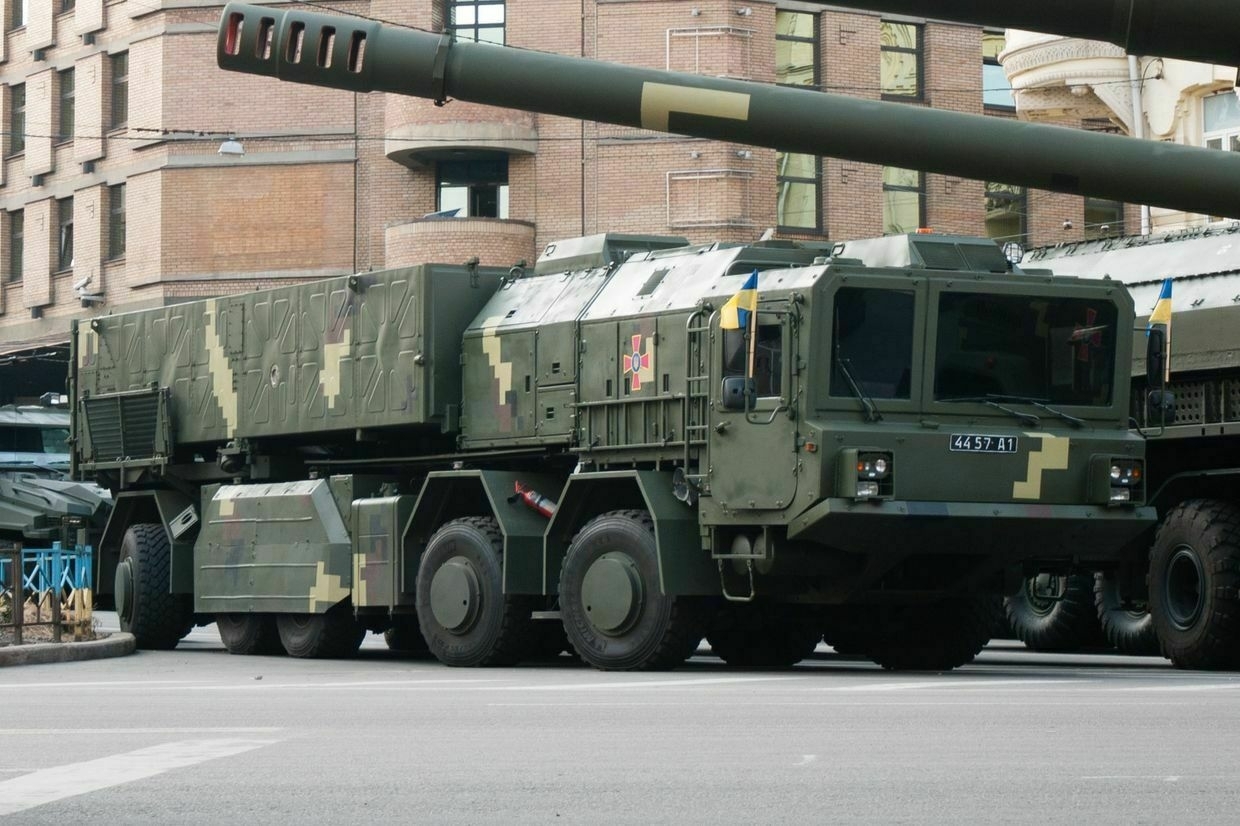
Ukraine announced on June 13 that it’s short-range Sapsan ballistic missile would go into mass production, a major development in Kyiv’s ongoing efforts to domestically produce the weapons it needs to fight Russia’s full-scale invasion.
As Ukraine faces growing challenges in securing weapons from Western partners, and Russia continues launching drone and missile strikes on civilians, the development of Ukraine’s missile production is seen as a critical step toward strengthening its defense capabilities.
“The very emergence of domestic ballistic missiles is a bold political statement — a big, fat middle finger to the Kremlin’s claims that Ukraine must be demilitarized,” Defense Express military expert, Ivan Kyrychevsky, told the Kyiv Independent.
What is a ballisitic missile?Unlike cruise missiles which are jet engine powered and fly in a relatively flat trajectory, ballistic missiles are rocket-powered and launched high into the atmosphere before arcing back down onto their target.
They’re only guided during the initial stages of launch, so they can be less accurate than cruise missiles, but have the advantage of reaching incredibly high speeds — sometimes more than 3,200 kilometers per hour — as they approach their targets.
“There are no red lines of escalation if the Russians themselves are striking with ballistic missiles directly and continuously at residential buildings.”
As such, they are more difficult to intercept — only the most advanced air defense systems are capable of shooting them down, the U.S.-made Patriot system being one of them.
Russia uses them to devastating effect in Ukraine — during the latest mass attack on Kyiv on June 17, at least 10 people were killed and scores more injured, many of them when a ballistic missile partially destroyed a residential building.
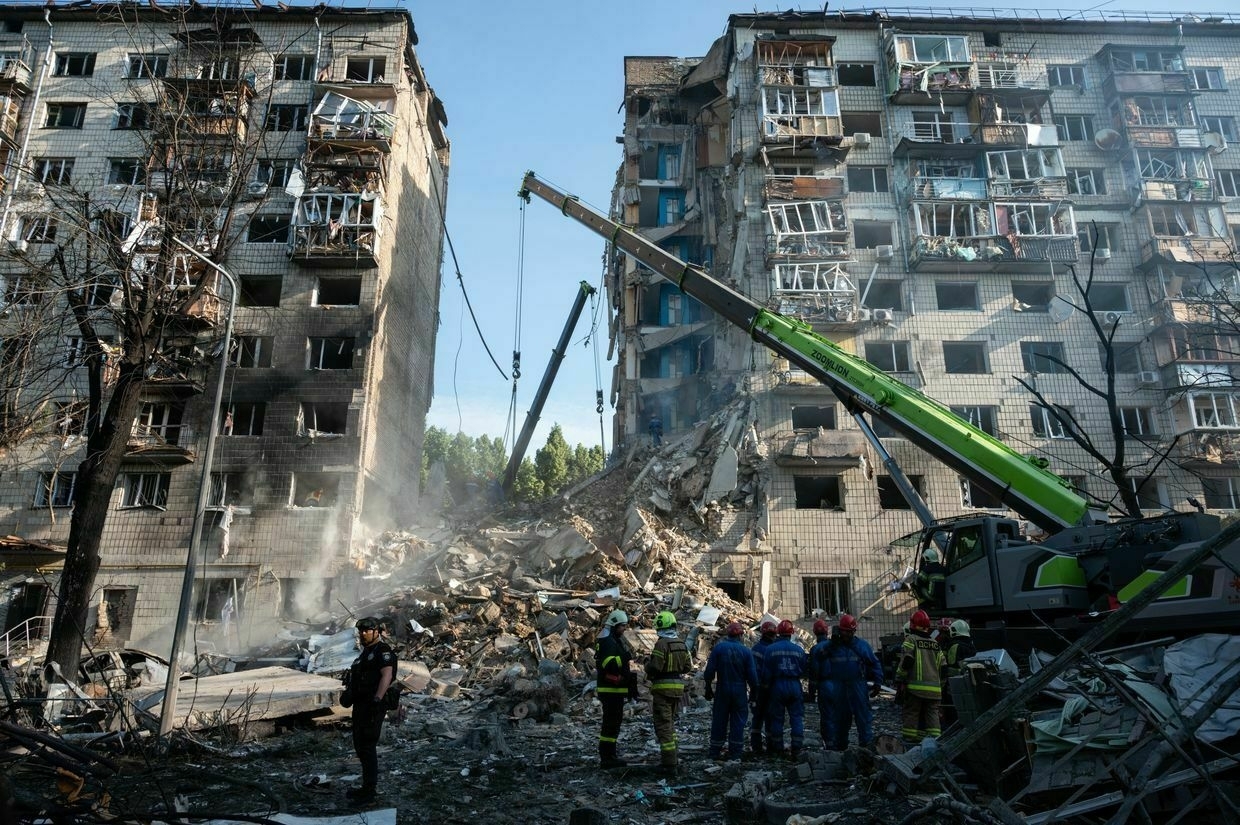
People walk near a residential building damaged by a Russian attack in Kyiv, Ukraine, on June 17, 2025. (Danylo Antoniuk / Anadolu / Getty Images) 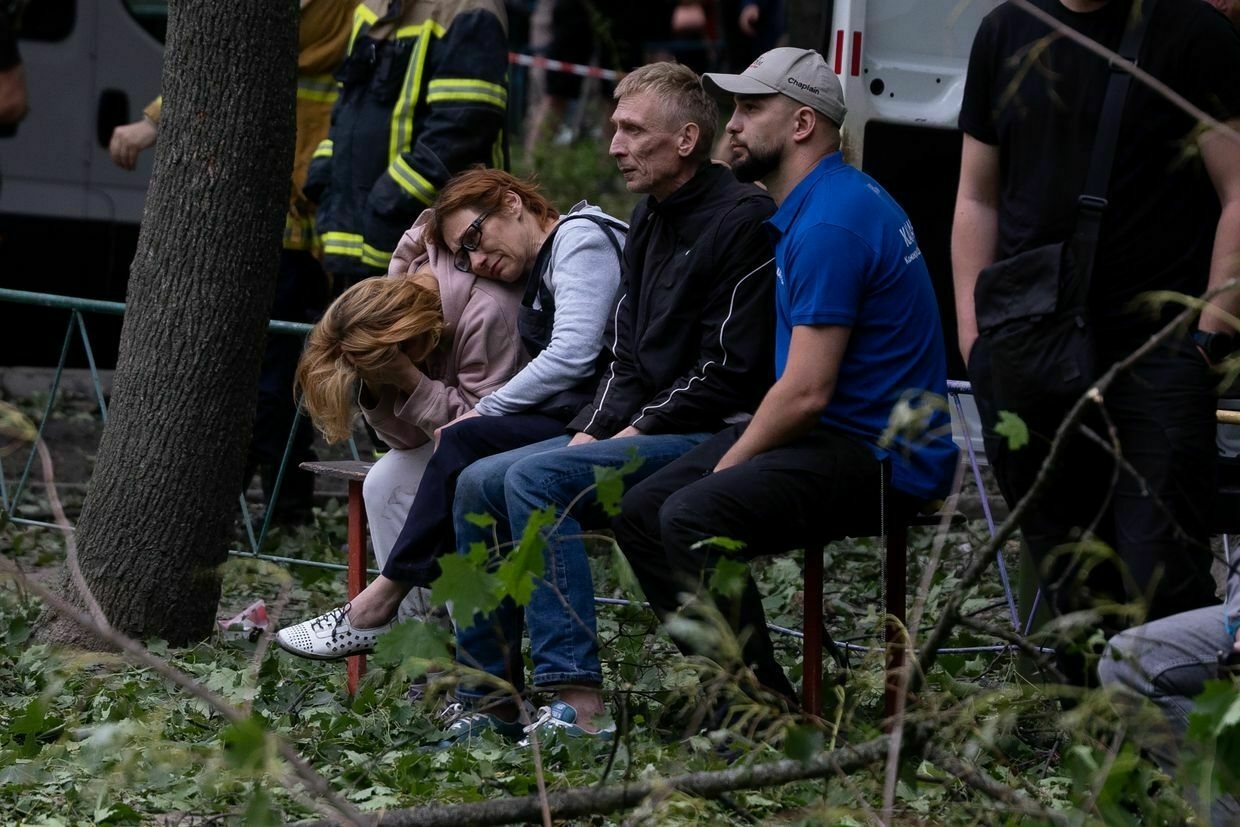
Parents wait as rescuers search for their missing son in the rubble of a collapsed building after a Russian attack in Kyiv, Ukraine, on June 17, 2025. (Oleksandr Magula / Suspilne Ukraine / JSC “UA:PBC” / Global Images Ukraine via Getty Images) What do we know about the Sapsan ballistic missile?The latest development is that it has successfully completed combat testing and is in the process of serial production, but it is not known when the missiles will be seen in regular use on the battlefield.
The missile completed testing in May after successfully striking a Russian military target at a range of nearly 300 km, Valentyn Badrak, head of the independent Ukrainian think tank, the Center for Army, Conversion and Disarmament Studies, told Liga.net.
"We will have to make ballistic missiles because there is nowhere else to get them."
Kyrychevsky said that the exact technical specifications of Sapsan are not clear, as revealing this information would play into Russia's hands, though he believes the missile can reach further than 300 kilometers.
The missile’s payload appears to be particularly significant, with reports indicating a warhead weight of over 480 kilograms.
Federico Borsari, a Resident Fellow with the Transatlantic Defense and Security Program at the Center for European Policy Analysis (CEPA), told the Kyiv Independent that "it is a very big warhead, which means that Ukraine is prioritizing strike power over range."

Hrim-2 tactical missile mockup on display in Ukraine in an undated photo. (VoidWanderer / Wikimedia) In terms of targets, such a large warhead should make it effective against pretty much anything within its range.
"There’s always a trade-off in missile design. The heavier the warhead, the shorter the range. Ukraine wants to have a very powerful strike weapon to destroy any targets on Russian territory but within 300—500 kilometers," he said.
Ahead of the rest of Europe"Ukraine is the first European country since the Cold War that is producing a conventional ballistic missile again," Fabian Hoffmann, a defense expert and doctoral research fellow at the University of Oslo, told the Kyiv Independent.
According to Hoffmann, Ukraine is "definitely ahead of the rest of Europe" as no other European country produces conventional short or medium-range ballistic missiles.
France is the only European country currently producing ballistic missiles, and even those are sea-launched intercontinental ballistic missiles (ICBMs) intended solely for nuclear deterrence. The United Kingdom, while part of the nuclear club, does not manufacture its own ballistic missiles.
Hoffmann added that Western countries definitely knew that Ukraine was working on a new missile, and there was some "hesitation and concern" about Kyiv obtaining this sort of offensive strike ability, and Russia's possible escalation of the war in reaction to their use.
"But I think especially over the last months, there is a consensus that if it's a Ukrainian weapon that is built inside Ukraine, by Ukrainian engineers, and operated by Ukrainian personnel, then it's not really something that Western partners want to get too involved with," Hoffmann said.
Kyrychevsky sees the development of a new Ukrainian missile as a no-brainer given the current geopolitical uncertainties facing Ukraine.
"The Americans are running out of missiles, and they are not ready to give them to us. European partners have no ballistic missiles of their own," he said, adding: "We will have to make ballistic missiles because there is nowhere else to get them."
Kyrychevsky dismissed any concerns over Russian escalation, saying there are no red lines to cross if Russia is already "striking with ballistic missiles directly and continuously at residential buildings."
Breaking through Russia's air defenceAccording to Borsari, Russia's air defense performance against missiles has improved since 2023, particularly in response to Ukrainian strikes with Western-supplied weapons such as Storm Shadow and ATACMS.
"Russia has anti-ballistic missile defense systems like the S-300 and S-300V4, including anti-ballistic missile capabilities. In particular, the S-300 PM was specifically designed to intercept ballistic missiles," he said.
"Russia has the resources and the technology to intercept the ballistic missiles simply because they had to deal with this type of potential threat during the Cold War," he added.
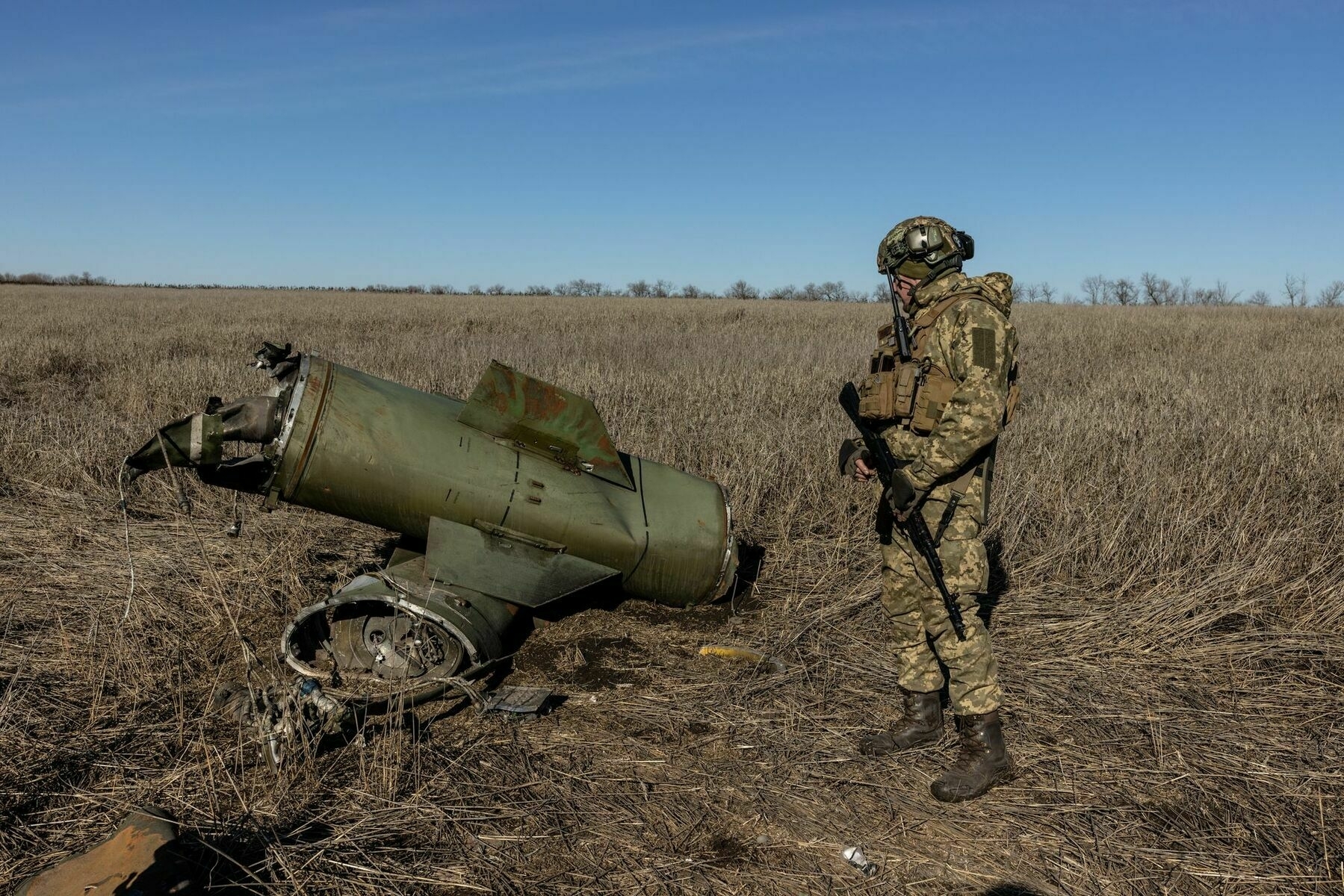
A Ukrainian soldier stands near the wreckage of an S-300 missile in Chasiv Yar, Ukraine, on March 6, 2023. (Diego Fedele / Getty Images) Although Russian air defense has become more effective against known systems, the new missile may catch them off guard, at least temporarily. Russia will need time to update its tracking software and integrate this new threat into its defense network.
"That won’t happen overnight. Each side learns and adapts. Russia is learning, and so is Ukraine," Borsari said.
"Sapsan is a very good development for Ukraine," he said. "Until now, Ukraine didn’t have an indigenous and domestic ballistic missile in its arsenal, apart from semi-ballistic ATACMS provided by the U.S. in 2023."
Hoffmann added that the new missile can make a difference, depending on how accurate it is and how easy it will be for Russian air defense to intercept it.
"We see in the Middle East right now that Iran has a lot of ballistic missiles, but they are inaccurate. They have to launch a massive amount of it in order to potentially hit the targets. And still there's no guarantee," Hoffmann said.
Russia also face a problem of geography — its vast landmass means it simply doesn't have enough air defense systems to cover all of its territory so it will likely have to prioritize defending some areas over others.
Scaling up productionHoffmann said that Ukraine faces major challenges in scaling up missile production, as large above-ground factories would be easy targets for Russian strikes.
To protect this critical infrastructure, Ukraine likely needs to build underground facilities, which is a complex, costly, and time-consuming endeavour.
Borsari added that the production will take time, but if Ukraine can manage to produce at least 80 to 100 missiles per year, it would have a decent amount to conduct strikes against Russian targets.
Ukraine's domestic weapons productionUkraine has continued to increase domestic weapon production. Zelensky said on April 16 that over 40% of the weapons used at the front line are now produced in Ukraine, including over 95% of the drones used at the front line.
Zelensky also previously revealed that Ukraine had developed another domestic-made weapon, a missile-drone Palianytsia.
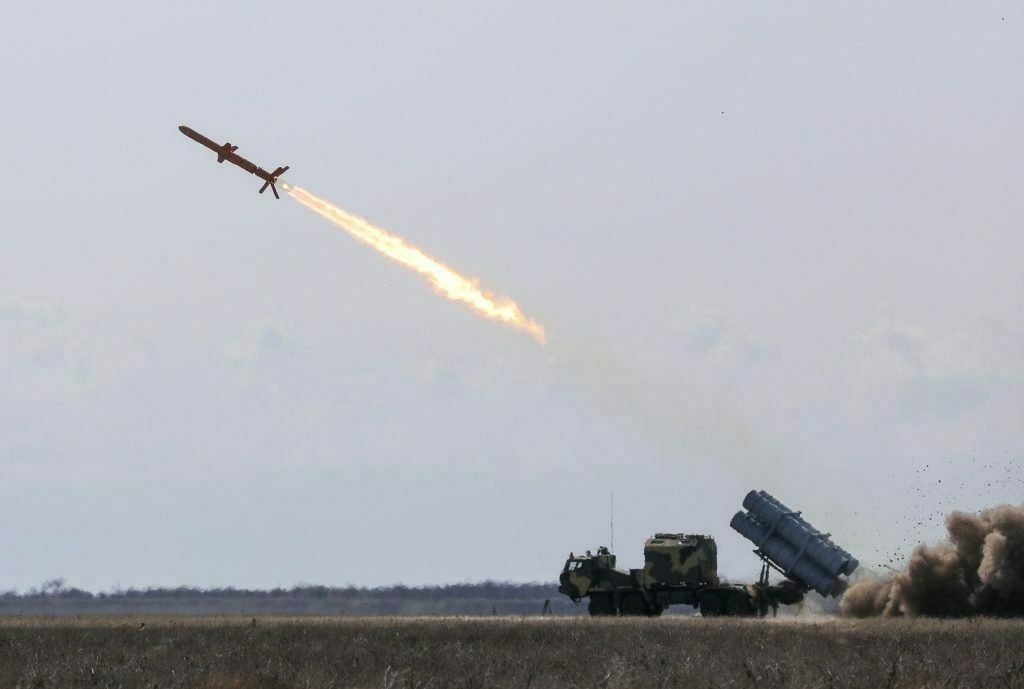
A Ukrainian-made Neptune missile is fired on April 5, 2019. (The Presidential Office of Ukraine) Ukraine's Defense Minister Rustem Umerov said in late 2024 that Ukraine also resumed and scaled up serial production of Neptune cruise missiles, modifying them to have a greater range.
As Ukraine attempts to increase its defense production, Russia has continued to unleash large-scale attacks on Ukrainian cities, regularly launching hundreds of drones to overwhelm Ukrainian air defenses.
And Moscow is only building more and more — Ukraine's military intelligence (HUR) told the Kyiv Independent earlier this month that Russia's production of ballistic missiles has increased by at least 66% over the past year.
Hi, this is Yuliia. Thank you for reading this article. The Kyiv Independent doesn't have a wealthy owner or a paywall. Instead, we rely on readers like you to keep our journalism funded. If you liked this article, consider joining our community today.
‘Beyond cynical’ – Russian doctor carved ‘Glory to Russia’ scar on POW during operation, Ukraine saysAfter more than three years of Russia’s full-scale invasion, each new revelation of cruel treatment of Ukrainians in Russian captivity hardly surprises anyone. But when a photo recently emerged online, showing a “Glory to Russia” scar on the body of a Ukrainian prisoner of war (POW), it sent shockwavesThe Kyiv IndependentDaria Shulzhenko

-
Details of the MASSIVE attack on Ukraine: Russians KILL civilians #shorts
-
Russian advance in Sumy region falters amid intense Ukrainian resistance
Russian forces continued their advance in one section of the front in Ukraine's Sumy region, with the largest advance near the village of Yablunivka, approximately 25 km from Sumy. According to monitoring service DeepState, Russian troops advanced narrowly towards the main road to Sumy, west of Yunakivka.
The General Staff of the Armed Forces of Ukraine reported that in the North Slobozhansky and Kursk directions, Ukrainian defense forces repelled 38 Russian assault actions in the past 24 hours. Meanwhile, the enemy conducted 14 airstrikes, dropping 32 guided bombs, and fired 225 times on Ukrainian military positions and populated areas, including one attack using a multiple launch rocket system.
Military analyst Oleksiy Hetman commented on the situation in the Sumy region, noting that the fierce combat in this area was considered a critical part of the Russian summer offensive campaign. However, after breaking through the initial and most vulnerable line of the Ukrainian defense, the offensive momentum of the enemy was exhausted. "They did indeed pass the first line of defense, which was admittedly weak. It was expected that we would halt or at least slow the occupiers, which we have now done. The advance towards Sumy has practically stalled, so to speak. All those apocalyptic scenarios have not materialized," explained Hetman.
According to Hetman, the Russians achieved certain tactical success at the beginning of the offensive due to the preliminary accumulation of reserves, manpower, and equipment. However, at this point, the expert added that the Russian advance has stalled significantly far from Sumy. "I think right now they won’t get closer than 20 km to Sumy. But anything is possible; they might reinforce with more troops, equipment, and resources. Some advance is possible, but there is no reason to panic or believe they will soon be near Sumy," Hetman stressed.
On June 14, Ukrainian President Volodymyr Zelensky stated that fighters from the 225th separate assault regiment of the Armed Forces of Ukraine expelled Russian forces from the village of Andriivka in the Sumy region. The Ukrainian President also noted that Russia had ammassed 53,000 soldiers in this area.
-
Zelensky arrives at G7 summit hours after Trump departs
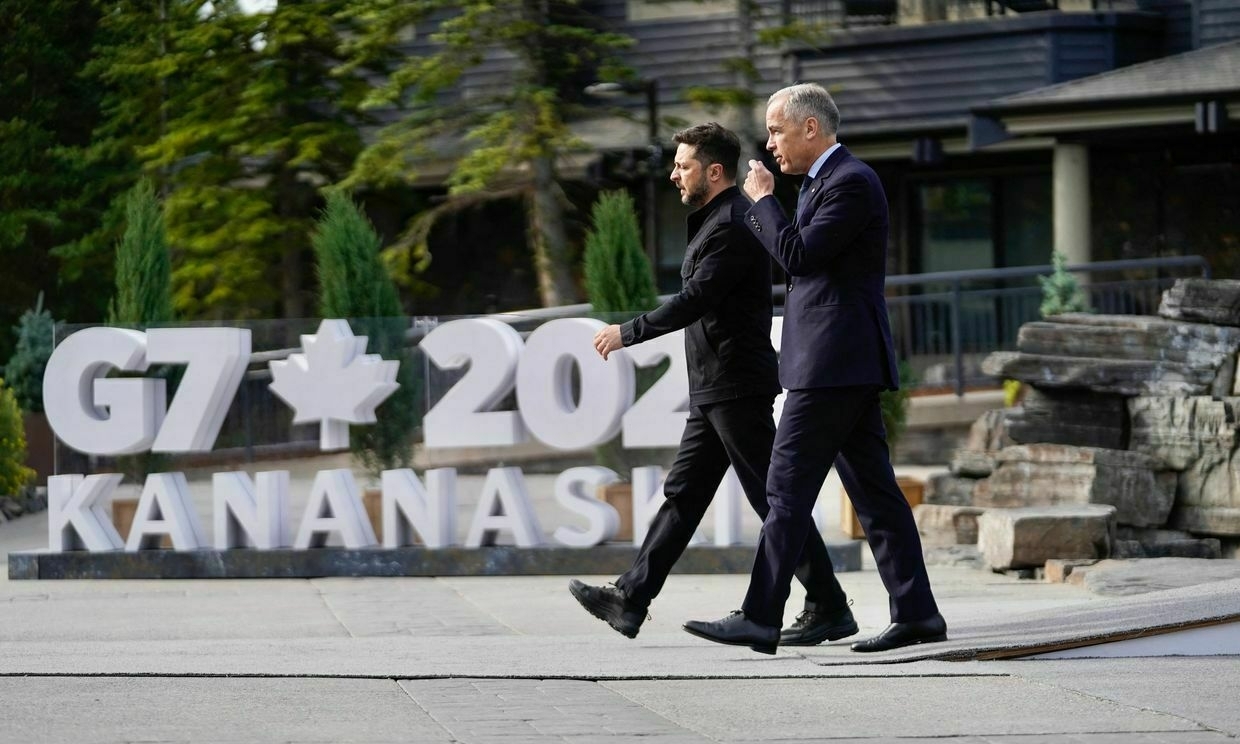
President Volodymyr Zelensky arrived at the G7 Leaders' Summit in Canada on June 17 ahead of the final day of the G7 Leaders' summit, according to a Kyiv Independent journalist on the ground.
Zelensky was greeted by Canadian Prime Minister Mark Carney in Kananaskis, Alberta, where the summit is being held.
The Ukrainian president was expected to meet U.S. President Donald Trump at the summit. However, it is not clear if the meeting will take place because Trump left the summit early due to escalating tensions in the Middle East.
White House spokesperson Caroline Leavitt confirmed Trump’s early departure from the summit, citing the ongoing escalation between Israel and Iran.
The Israeli military launched a large-scale attack on Iran’s nuclear and military infrastructure on June 13, which was followed by retaliatory ballistic missile strikes from Tehran. Israel has since struck key defense targets in Tehran, including the headquarters of Iran’s Defense Ministry.
Zelensky was to hold his third in-person meeting with Trump, which may signal the future of Trump and Zelensky's relationship, as well as offer insight into the United States' commitment to supporting Ukraine.
In February, Zelensky and Trump held their first meeting, which escalated into a heated argument, with Trump and Vice President JD Vance lambasting the Ukrainian leader over what they described as "a lack of gratitude for U.S. support."
The second meeting between Trump and Zelensky in the Vatican in April led to the U.S. president reiterating calls for a ceasefire in Ukraine and even threatening to impose sanctions on Russia.
In the month since their last in-person meeting, tensions between Trump and Zelensky have risen again. Despite issuing several threats, Trump has not followed through on implementing additional economic pressure on Moscow.
Ahead of the summit, European leaders urged G7 nations to impose harsher sanctions on Moscow in order to secure a ceasefire in the war against Ukraine.
"To achieve peace through strength, we must put more pressure on Russia to secure a real ceasefire, to bring Russia to the negotiating table, and to end this war. Sanctions are critical to that end," European Commission President Ursula von der Leyen said on June 15 at a press briefing attended by a Kyiv Independent journalist.
Zelensky is still expected to attend the scheduled meetings with other G7 leaders.
Zelensky said in a closed-door meeting attended by the Kyiv Independent on June 13 that his priority is to speak with Trump about sanctions against Russia, peace talks, weapons purchases, and U.S.-Ukraine economic cooperation.
"There are steps forward we can take — but we need the political will of the U.S. president, if he wants," Zelensky said on June 13.
Amid increased anxiety around Trump's commitment to ending the war, U.S. Defense Secretary Pete Hegseth recently announced that the Pentagon would reduce funding allocated for military assistance to Ukraine in its 2026 defense budget.
Canada, which holds the G7 presidency in 2025, invited Zelensky to participate in summit, marking the Ukrainian president’s fourth G7 meeting since the outbreak of the full-scale invasion in 2022.
EU leaders call for tougher sanctions on Russia at G7 summit“To achieve peaceful strength we must put more pressure on Russia to secure a real ceasefire, to bring Russia to the negotiating table, and to end this war. Sanctions are critical to that end,” European Commission President Ursula von der Leyen said.The Kyiv IndependentAbbey Fenbert
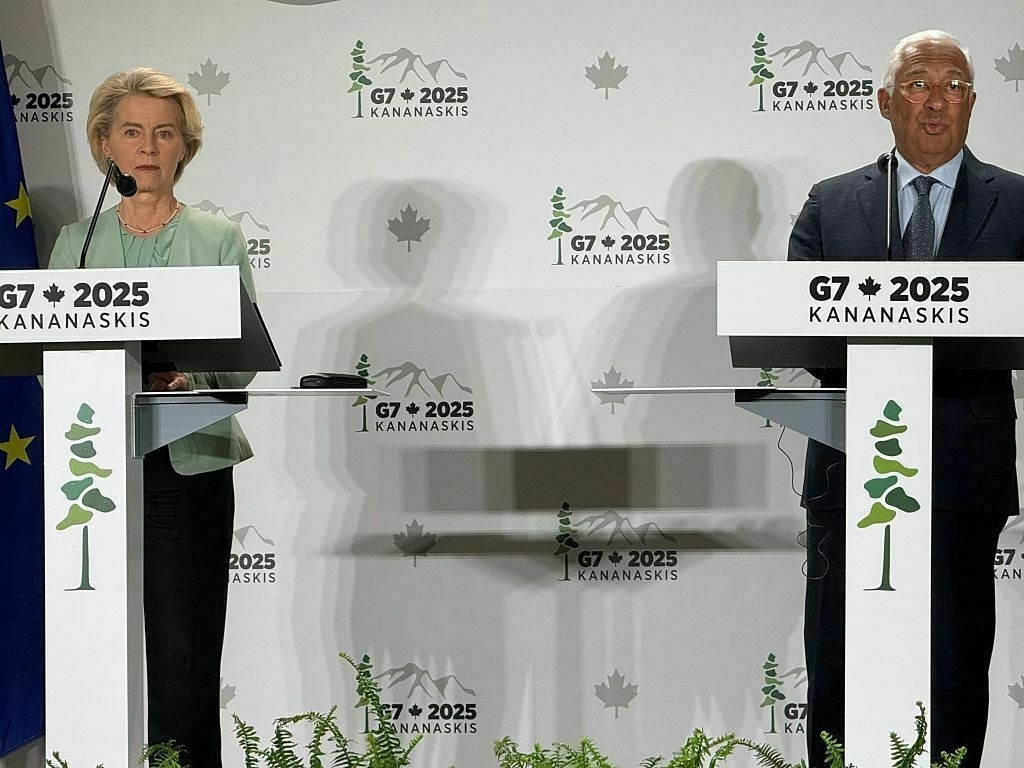
-
‘Beyond cynical’ – Ukraine says Russian doctor carved ‘Glory to Russia’ scar on POW during operation

After more than three years of Russia’s full-scale invasion, each new revelation of cruel treatment of Ukrainians in Russian captivity hardly surprises anyone.
But when a photo recently emerged online, showing a “Glory to Russia” scar on the body of a Ukrainian prisoner of war (POW), it sent shockwaves across the world.
The words, written in Russian, were branded into the right side of the body alongside the letter “Z,” a symbol of the full-scale invasion that many Ukrainians and critics of the war liken to the Nazi swastika.
The cynical act came to light after a Ukrainian doctor shared a photo of the released soldier’s mutilated abdomen earlier in June, taken not long after his release from Russian captivity. The photo was later verified by Ukraine’s military intelligence (HUR).
Although the identity of the released soldier remains undisclosed, it is known that his name is Andrii, and he is currently receiving treatment through “Neopalymі” (“Unburned” in Ukrainian), a national program that provides free care for war-related injuries.
Maksym Turkevych, CEO of Neopalymi, told the Kyiv Independent that they are confident the inscription on Andrii’s body was made by a surgeon, calling it “beyond cynical."
“It was done under general anesthesia, which strongly suggests it wasn’t meant as torture. It wasn’t about inflicting pain,” Turkevych said. “It was done with the intent to leave a mark.”
According to HUR spokesperson Andriy Yusov, a doctor at a Ukrainian rehabilitation center where Andrii was receiving treatment, couldn’t stay silent, took the photo and shared it online as evidence of what Ukrainian defenders endure in Russian captivity.
“The photo speaks for itself,” Yusov said on national television on June 10. “It’s crucial that it’s seen not just by Ukrainians — they already know what the Russians are capable of — but by the whole world."
According to the United Nations, more than 95% of freed Ukrainian POWs have said they were tortured during their captivity. Survivors have recounted harrowing treatment, including being brutally beaten, electrocuted, and forced to endure painful stress positions.
95% of freed Ukrainian POWs have said they were tortured during their captivity. Survivors have recounted harrowing treatment, including being brutally beaten, electrocuted, and forced to endure painful stress positions.
Many have faced mock executions, threats of rape or death, and were denied basic medical care. Some were left without food, locked in isolation for weeks, or permanently marked with burns or scars.
While Ukraine has managed to bring back 5,757 people in more than 65 exchanges, according to the Coordination Headquarters for the Treatment of POWs, thousands of POWs and civilians remain in Russian captivity.
Yusov did not reveal details about the POW scarred in captivity, but noted that he was freed in one of the earlier exchanges, not the most recent ones.
A surge in prisoner releases followed talks between Ukrainian and Russian delegations in Istanbul in early May. While the meeting didn't lead to a political breakthrough, it marked the first direct negotiations between the two sides since 2022 and resulted in a series of POW exchanges and the return of fallen soldiers' remains.
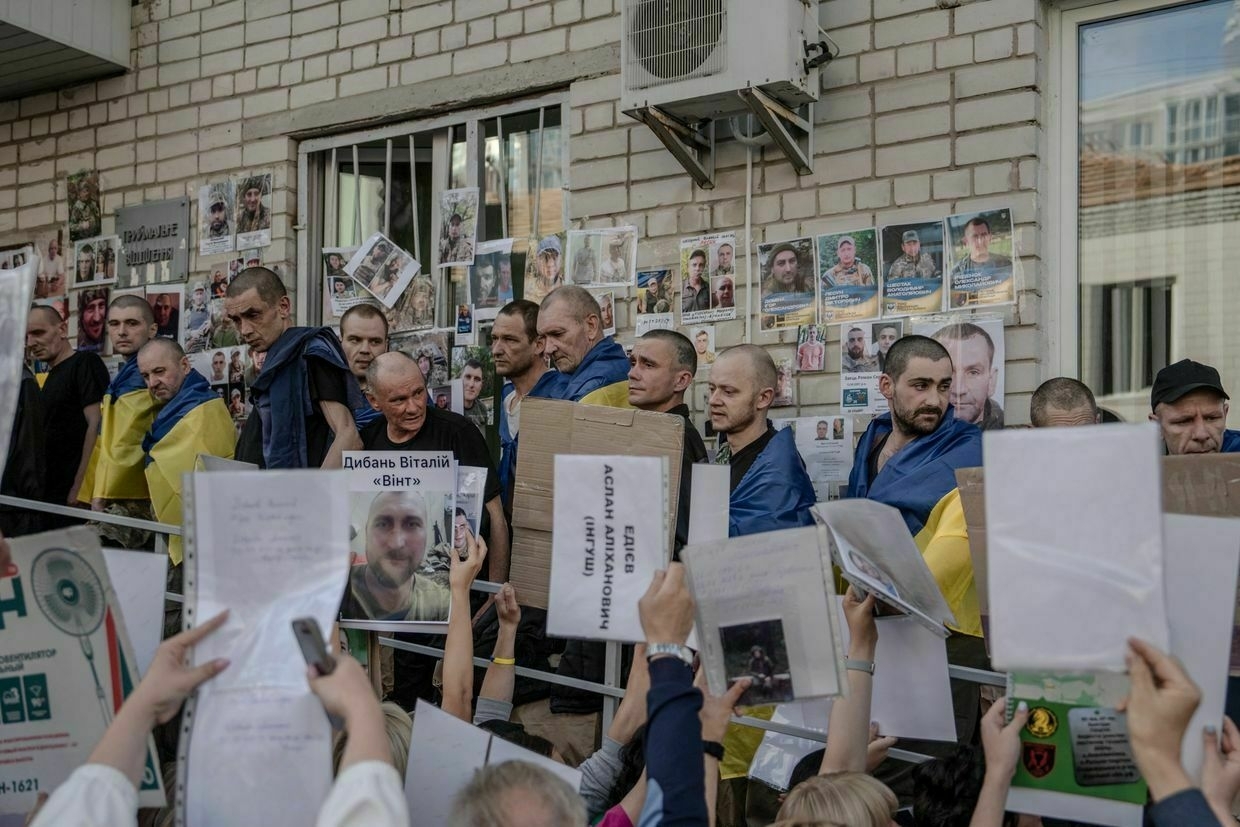
Freed Ukrainian POWs look at portraits of missing or captured servicemen held by people during their arrival in Chernihiv Oblast, Ukraine, after a prisoner exchange on June 10, 2025. (Andrew Kravchenko / AFP via Getty Images) ‘Inhumane system'For Turkevych and his team, seeing the scars left by Russian captivity on Ukrainian POWs has become a routine part of their work. Launched in August 2022, the project has treated nearly 400 patients with war-related injuries, burns, and scars, including former POWs.
Although Turkevych and his team have treated several released defenders bearing swastika-shaped scars, some even on their foreheads, he describes the scar on Andrii's body as exceptionally cynical.
Turkevych said that the sharp precision of Andrii's scar suggests that he was unconscious – otherwise, the wound would have looked very different. According to him, the mark was made using an electrocautery device, which uses heat to cut or coagulate tissue, rather than something like a soldering iron or a knife.
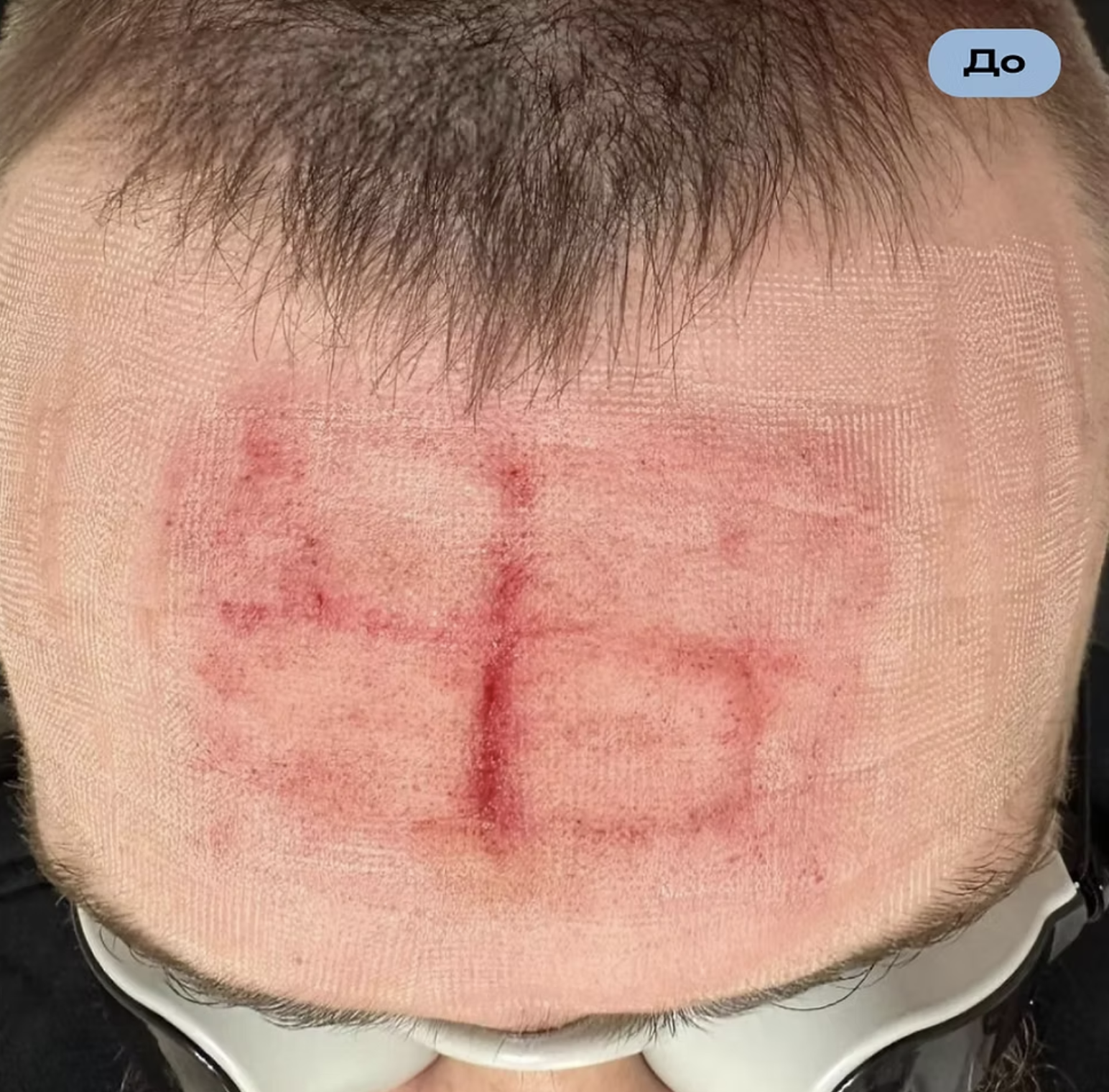
Several Ukrainian defenders returned from Russian captivity with swastika-shaped scars, some on their foreheads. (Nopalymi.in.ua) Although Turkevych did not specify how long Andrii had been in captivity or where he was held, he said the scar was likely inflicted around 15 months ago. The mark with the inscription overlapped with other surgical scars, according to Turkevych, suggesting it was made during one of the procedures Andrii underwent.
"The surgeries, including the one that left the mark, were likely performed around the same time," he said.
According to Turkevych, Andrii had a shrapnel injury in the groin and damage to his bladder, which required surgery. A catheter is still visible in the photo shared by a Ukrainian doctor, along with a massive scar on his stomach.
Turkevych says that Andrii is currently unavailable for comment as he is undergoing treatment.
He believes Andrii has likely undergone three to five procedures in captivity, which would explain the layered and uneven appearance of the scar tissue: "At some point, someone decided to get 'creative' and left a signature behind," he said.
While it's unclear how long it will take to remove the "Glory to Russia" scar from Andrii's body, Turkevych says it will definitely be removed.
"As of now, we hope to see noticeable results on the inscription in about five to six months."
For Turkevych, it also exposes a deeper truth about Russia: "Their entire structure is built on cruelty, aggression, cynicism, and a willingness to commit deeply immoral acts just to show loyalty and secure a place within it."
What shocked him most wasn't just the cruelty of the system itself, but that even now, over three years into the full-scale war, people still want to be a part of it.
"There are still too many in Russia who knowingly join this brutal, inhumane system," Turkevych said. "They're ready to do whatever it takes to belong, regardless of how much it violates basic human values."
Note from the author:
Hi! Daria Shulzhenko here. I wrote this piece for you. Since the first day of Russia's all-out war, I have been working almost non-stop to tell the stories of those affected by Russia’s brutal aggression. By telling all those painful stories, we are helping to keep the world informed about the reality of Russia’s war against Ukraine. By becoming the Kyiv Independent's member, you can help us continue telling the world the truth about this war.
-
Europe finally lays out road map to detox from Russian oil and gas
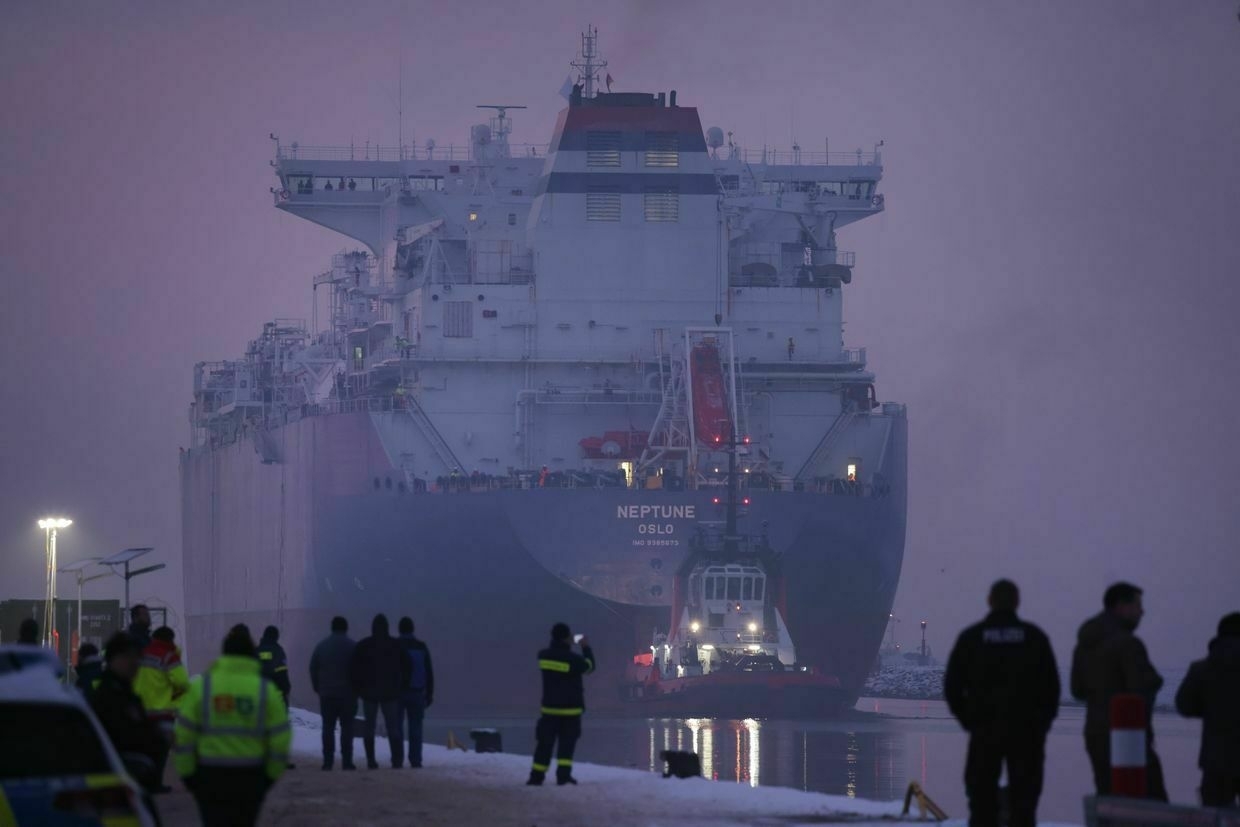
After three years of limited measures and political hangovers, the European Union has laid out a legal roadmap to finally end its long-standing addiction to Russian oil and gas. Under a new legislative proposal announced in Strasbourg on June 17, Brussels aims to cut off all remaining imports of Russian fossil fuels by the end of 2027.
The plan outlines a gradual withdrawal from Kremlin-controlled energy — with new contracts for Russian gas banned from January 2026, and existing short- and long-term contracts phased out over the following two years. Landlocked countries still hooked on pipeline gas from Russia will be given until the end of 2027 to find cleaner fixes.
“Russia has repeatedly attempted to blackmail us by weaponizing its energy supplies,” European Commission President Ursula von der Leyen said, calling the move the final step in “ending the era of Russian fossil fuels in Europe for good."
For years, the EU’s energy dependency has been a source of vulnerability — one that Russia has exploited both economically and politically. Even after a dramatic drop in imports since the invasion of Ukraine, Russian gas and oil kept flowing in significant volumes.
In 2024 alone, the bloc imported 52 billion cubic metres of Russian gas and 13 million tonnes of crude oil, adding billions to the Kremlin’s war chest — a relapse many saw coming.
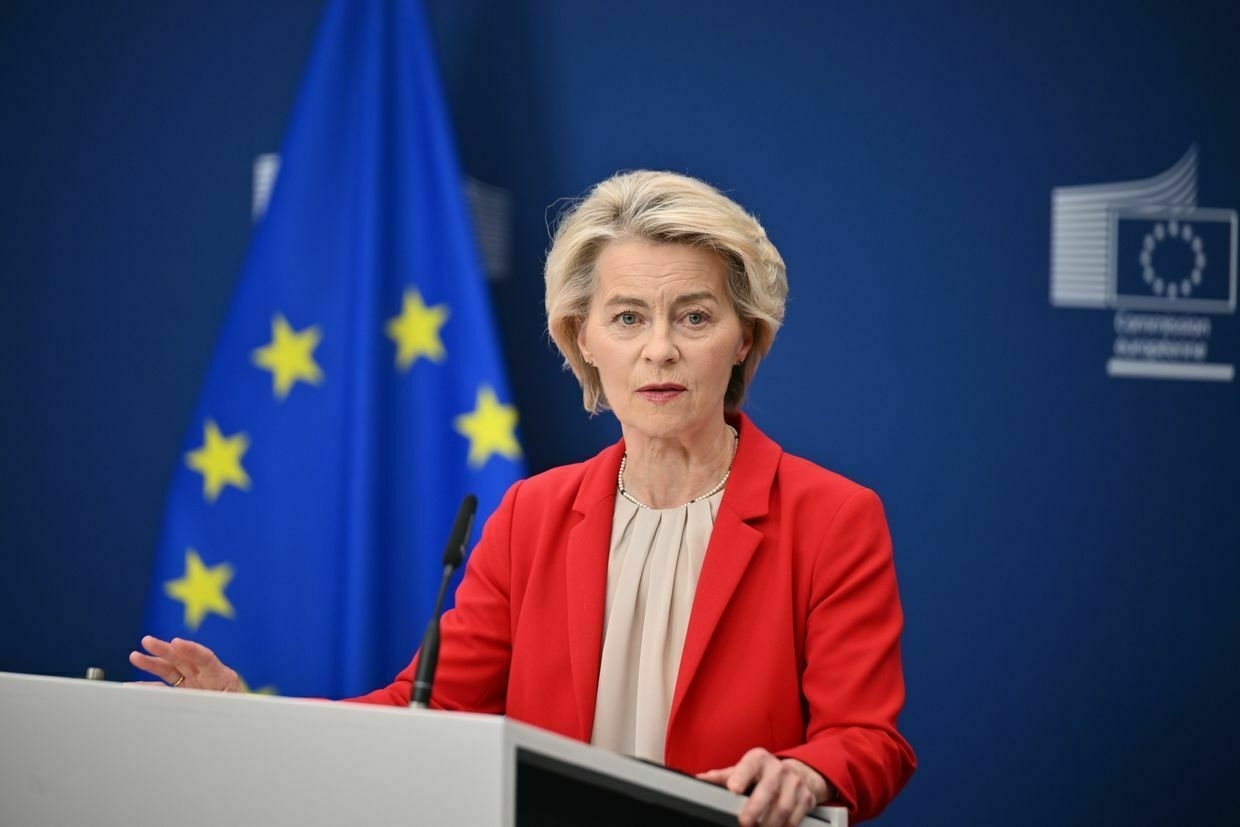
EU Commission President Ursula von der Leyen speaks during a joint press conference on the 18th sanctions package against Russia in Brussels, Belgium, on June 10, 2025. (Dursun Aydemir/Anadolu via Getty Images) The new rules mark an attempt to go virtually cold turkey. Liquified natural gas (LNG) terminal services for Russian companies will be banned from January 2026, and any long-term terminal agreements signed before June 2025 must end by 2028. Crucially, importers will now have to come clean about the origins of their gas, disclosing contracts, supply routes, and partner identities — a detox of sorts for a market long clouded in opacity.
The Commission insists the EU is ready for this break. Thanks to new infrastructure, falling demand, and booming global LNG supply, officials believe the bloc can handle the withdrawal without risking an energy crisis.
By 2028, global LNG capacity is set to increase by 200 billion cubic metres — five times the amount the EU still imports from Russia. At the same time, the EU’s own demand is expected to shrink significantly as renewables and efficiency targets kick in.
But not everyone is ready to cut ties. Hungary and Slovakia — both still heavily reliant on Russian energy — have criticized the proposal, warning of domestic economic fallout. Still, under EU voting rules, they can’t block the legislation alone.
It will be passed through majority voting, which requires support from at least 15 countries representing 65% of the EU population. While Budapest and Bratislava might try to dilute the final terms or drag out negotiations, the political momentum appears firmly on the side of withdrawal.
“If there is peace, which we all hope there will be soon, that would not lead to us starting to import Russian gas again.”
To keep the process on track, each EU Member State will be required to submit a “diversification plan” by March 2026, setting out how they’ll end their reliance and where they’ll source energy next. The Commission and the EU energy regulator ACER will monitor progress closely and can intervene if national plans fall short or market risks emerge.
The proposal is also designed with safeguards in case of severe supply disruptions, allowing temporary exemptions — a safety net, not a relapse clause. But Brussels is clear — the goal is full recovery.
EU officials are also clear that they plan to stay clean for good.
“If there is peace, which we all hope there will be soon, that would not lead to us starting to import Russian gas again — that would be a very unwise decision," EU Energy Commissioner Dan Jorgensen said on June 17.."Because that would just be refilling Putin’s war chest with money, that would be to repeat the mistakes we’ve done in the past."
Beyond energy security, the move is part of a broader push to clean up Europe’s energy habits. The regulation is closely tied to the EU’s clean transition strategy and industrial competitiveness plans, which aim to replace fossil fuel dependency with renewable alternatives — swapping addiction for resilience.
For a continent long caught in a toxic cycle of cheap gas and geopolitical risk, this may be the moment Europe finally gets clean.
‘A brutal strike’ — Massive Russian missile and drone attack hits Kyiv, killing 10, injuring at least 124Russian drones and ballistic missiles targeted the capital overnight, killing 15 people and injuring at least 114, local authorities reported. Damage to civilian infrastructure has also been reported throughout the city.The Kyiv IndependentOlena Goncharova
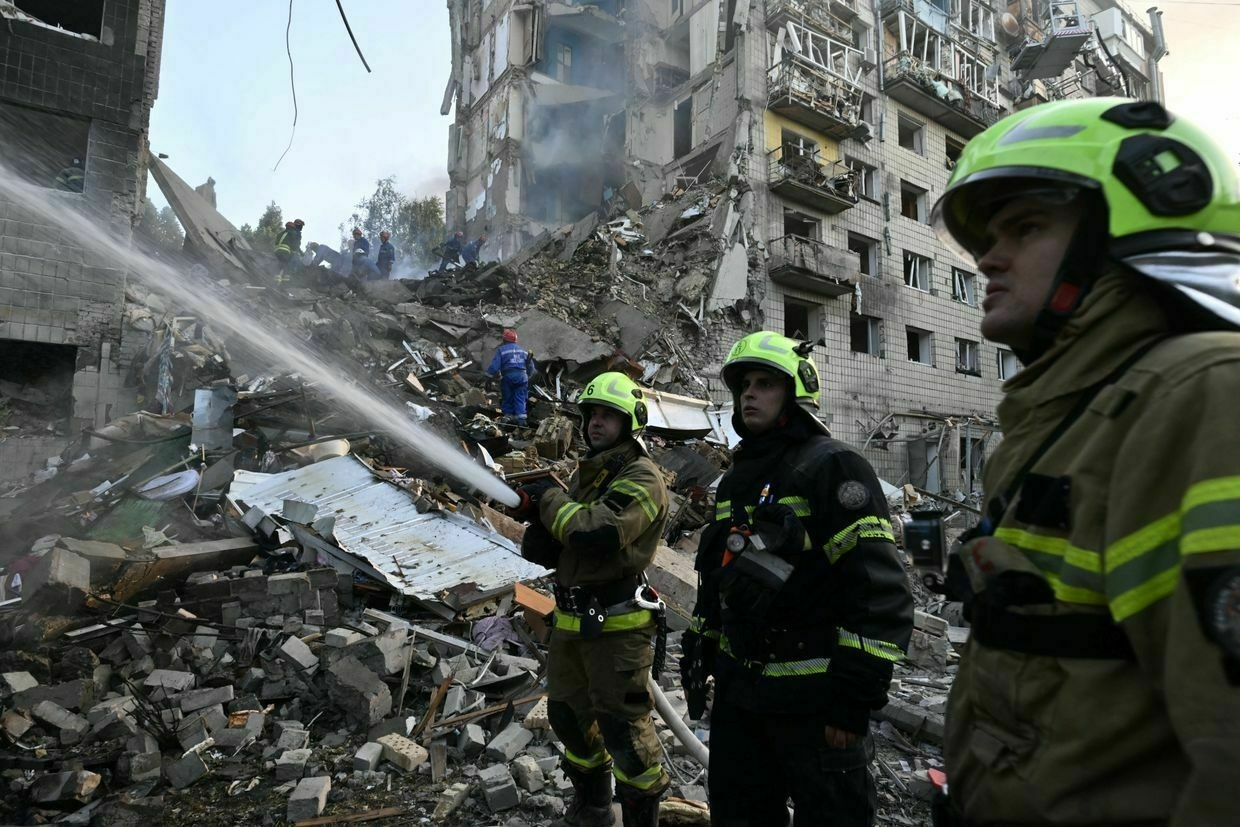
-
Russian Security Council Secretary Sergey Shoigu visits North Korea for high-stakes talks
In a strategic move directed by President Vladimir Putin, Sergey Shoigu, the Secretary of Russia's Security Council, touched down in North Korea on Tuesday, June 17. According to the Russian state agency Interfax, Shoigu is set to conduct negotiations with the North Korean leadership, including Kim Jong Un. The dialogue, which stems from an understanding forged during a previous visit on June 4, will pursue the goals outlined in the Comprehensive Strategic Partnership Agreement signed on June 19, 2024.
This marks Shoigu's second visit to North Korea within a month — his prior visit took place on June 4. During that occasion, discussions with Kim centered on the conflict in Ukraine, specific points of the strategic partnership agreement, and the preservation of historical memory concerning North Korean fighters who served in the Kursk region.
Shoigu's earlier meeting with Kim in March highlighted a revival of dialogue between Moscow and Washington and tackled ongoing issues related to the Ukraine conflict. Kim Jong Un reiterated North Korea's unwavering support for Russia and affirmed commitment to the strategic partnership terms, which include providing Russia with weaponry and dispatching North Korean soldiers to assist in the Ukraine war.
Among the terms discussed, Kim pledged 11,000 troops to aid in expelling Ukrainian forces from Russia's Kursk region. North Korea has also supplied Russia with millions of Soviet-style artillery rounds, 170-mm Koksan howitzers, 122-mm D-74 guns, 60-mm and 140-mm mortars, 107-mm and 240-mm multiple rocket launcher systems, and KN-23 (Hwasong-11) missiles.
On the battlefield, recent sightings reported the use of cluster munitions in the 122-mm caliber for Grad rocket systems. Since September 2023, North Korea has shipped over 20,000 containers of military hardware to Russia. South Korean analysts have valued these assets at 20 billion dollars.
-
Israel reluctant to accept Russia's mediation in war with Iran, Kremlin says
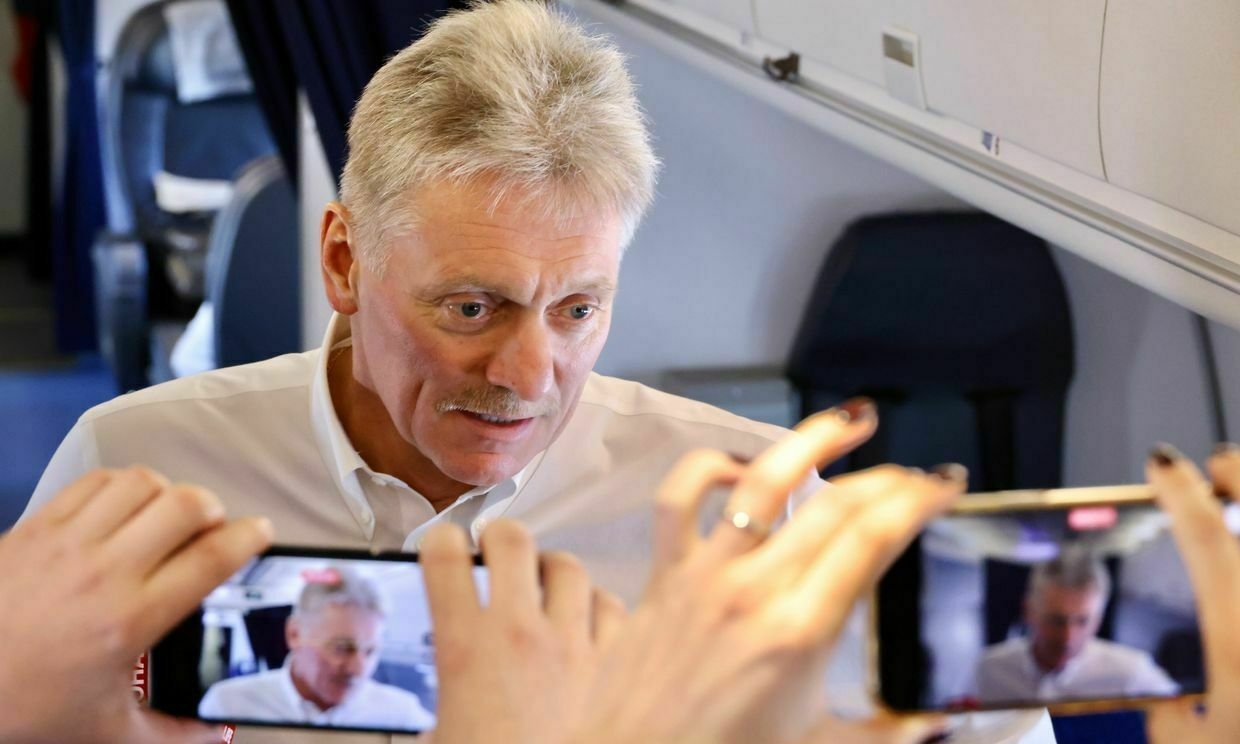
Israel is reluctant to accept Russia’s mediation in its war with Iran, Kremlin spokesperson Dmitry Peskov said on June 17, according to the Russian state news agency TASS.
“At the moment, we see reluctance — at least on Israel’s part — to resort to mediation or pursue a peaceful resolution,” Peskov claimed.
Since June 13, Israel has repeatedly carried out massive air strikes against Iran, particularly the country’s military leadership and nuclear facilities. The Israeli government justified the attacks by saying that Tehran was on the verge of creating a nuclear bomb.
Iran responded by attacking Israeli cities, including Tel Aviv, which resulted in civilian casualties, including five Ukrainian citizens on June 14.
U.S. President Donald Trump on June 15 said he was open to the idea of Russian President Vladimir Putin mediating between Iran and Israel.
“He is ready. He called me about it. We had a long talk about it. We talked about this more than his situation (war against Ukraine),” Trump said, according to ABC reporter Rachel Scott.
The Russian president held separate calls with Iranian President Masoud Pezeshkian and Israeli Prime Minister Benjamin Netanyahu on June 13.
During the call with Iran, Putin offered condolences for what the Kremlin labeled "numerous civilian casualties" and condemned Israel's actions as violations of the UN Charter. He later proposed that Russia could serve as a neutral mediator.
Israel has not commented publicly on the Kremlin's offer, but Peskov's statement implies Tel Aviv's rejection. France has also dismissed the idea, with President Emmanuel Macron saying on June 15 that Moscow "cannot be a mediator."
Russia's ties with Iran have deepened since the start of its full-scale invasion of Ukraine in 2022. Tehran has supplied Moscow with thousands of Shahed attack drones and ballistic missiles used in daily strikes against Ukrainian cities and infrastructure.
Israel, which has historically maintained cautious relations with Russia and is home to a significant Russian-speaking population, has not joined Western sanctions against Moscow.
As of June 16, Iran's Health Ministry claimed 224 people had been killed by Israeli strikes, with Tehran alleging that 90% of the casualties are civilians.
The figures have not been independently verified. Israel has not confirmed casualty numbers but maintains that the strikes were aimed at preventing an existential threat.
On June 13, Kyiv expressed support for Israel, describing Iran as a "source of instability in the region and beyond," citing Tehran's extensive military cooperation with Russia.
Israel-Iran war could provide economic boost Russia needs to continue fight against UkraineIsrael’s “preemptive” strikes against Iran targeting the country’s nuclear program and killing top military officials could have far-reaching implications for Ukraine and could boost Russia’s ability to continue its full-scale invasion, experts have told the Kyiv Independent. Iran has been one of Russia’s staunchest allies throughout the war, providing thousandsThe Kyiv IndependentChris York
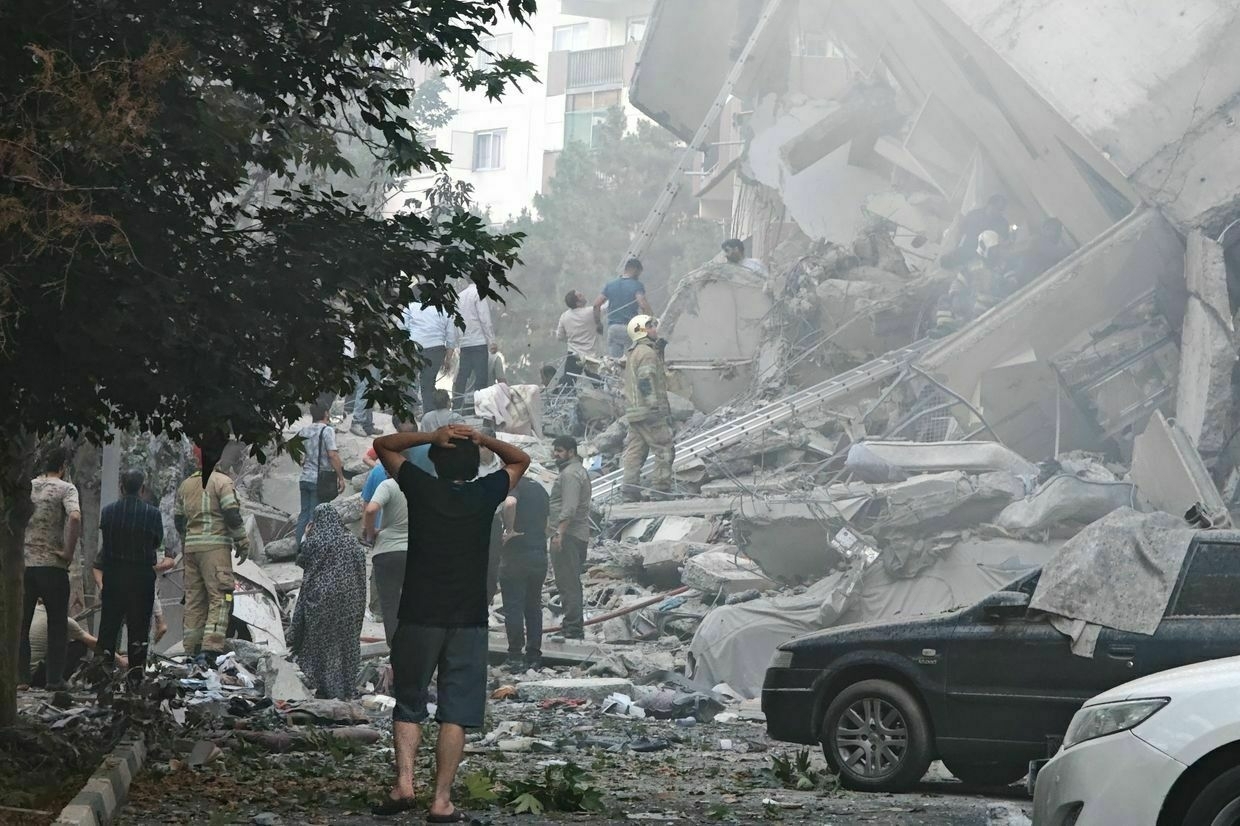
-
Investigation: How Russia steals Ukraine's trillion-dollar mineral wealth
Editor’s note: These investigations take a ton of time, resources and brainpower!
Investigations have always been the costliest part of journalism because we can’t just churn them out like commodity news in other organizations – we have to carefully probe, find connections and develop the story.
Help us to do just that! Upgrade today or help us with the tip jar!
For more than a decade, Russia has been destroying not only the lives of Ukrainians above ground, but also those beneath it.
One of the biggest victims of the war is the miners, who spend most of their time underground extracting the mineral wealth of Ukraine. According to Forbes, Ukraine boasts an estimated $14.8 trillion in mineral resources, 62 percent of which is in coal.
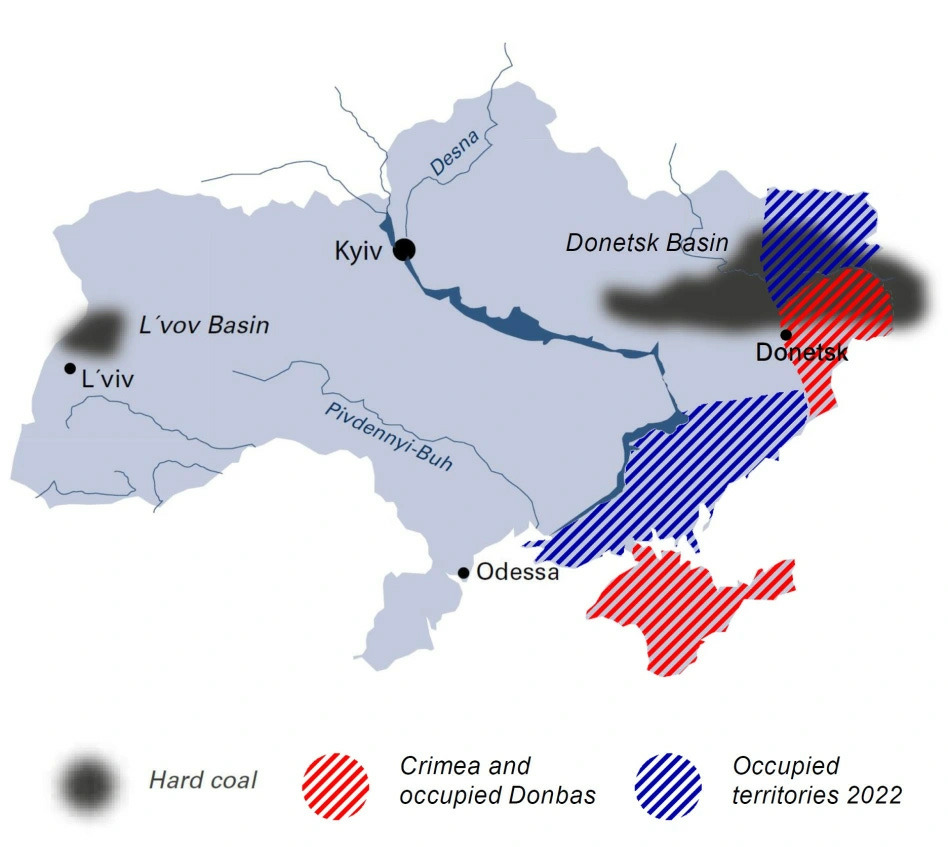
Ukrainian hard coal locations. Source: EURACOAL. Since 2014, Russia has consistently been taking over Ukrainian mines. As of 2022, Russia had seized 63 percent of Ukraine's coal deposits.
Russia has started illegally exporting coal for resale at some mines. This coal is produced, sold (often to foreign buyers), and then physically transported by Russian ships from the occupied port of Mariupol.
The Counteroffensive has established that Russia has used three vessels — ALFA 1, ALPHA HERMES and VIKTORIA V — to operate on the occupied territories and export coal illegally. Although Moscow is deliberately trying to hide the means of its crimes, in 2024-2025 Russia exported more than 60,000 tons of coal via those vessels.
This is not simply alleged looting — these are real, traceable logistics operations with identifiable ships.
The Counteroffensive also found that one of the biggest regional coal exporters – Don Coal Trade House, operating five mines in the occupied Luhansk region – systematically shipped coal from the occupied territories to Turkey in 2024. This occurred even though Turkey has formally condemned the Russian occupation.
This systematic campaign by Russia is a deliberate strategy of economic exploitation of occupied territories, which violates international law enshrined in The Hague Conventions.
Such actions – and ongoing impunity for Russia – incentivizes dictatorships to revive colonial practices, in which occupied territories become a raw material base for enriching far-off metropolitan areas.
Russia's illegal extraction of minerals
The Russian invasion in 2014 marked the beginning of the end for the mines in eastern Ukraine. Due to constant attacks and occupation of the Luhansk and Donetsk regions, only a small number of mines that were seized continued operations.
However, the Russian-aligned occupation administrations still considered it a net positive. After establishing a foothold in the region, they resumed coal production and export.
The Russians began to actively revive this sector in 2024. Officials announced the arrival of investors from Russia, and Putin personally promised to make every effort to boost the industry:
"We remember the great merits of the pioneer miners of Donbas and will do our best to revive coal mining, metallurgy and other industries here," he said.
By 2024, approximately 15 Ukrainian mines in the occupied Donetsk and Luhansk regions were leased to Russian companies. The two largest investors were Impex-Don and Don Coal Trade House.
Impex-Don manages four mines in the Donetsk region, where it is also registered. It is owned by Imperial, a company led by Viktor Gryzlov. He is a member of a family that controls the port in Rostov-on-Don, from where shipments are sent to countries in the Black Sea and Mediterranean basins.
Don Coal Trade House was founded in Rostov-on-Don in 2020 by Oleg Knyazev, who served as deputy governor of a Russian region from 2021 to February 2024.
These companies and other leaseholders promised to invest over $800 million in the seized facilities. Since 2024, the companies have been actively mining coal and selling it to other countries.
The Counteroffensive learned that Don Coal Trade House sold coal from the occupied territories abroad in 2024. In April-May 2024 alone, Don Coal Trade House shipped over 45,000 tons of coal to Turkey, with the total value close to $4 million, according to export-import database records. Turkey purchases this coal because, unlike the U.S. and the EU, it hasn't restricted coal trade with Russia or occupied Ukrainian territories.
The coal was shipped through a company registered in Hong Kong called Green Rabbit Limited. The company does not appear to have a website, registration date or publicly available contact information.
Despite its origin, this company has systematically purchased coal from Russian companies. It was also previously used by Russia to export wheat grown in the Donetsk region, records show.
The coal mined in Donbas was physically exported via the port of Mariupol, which is actively used to export looted minerals from occupied territories.
In April 2025, Russian vessels entered Mariupol to load coal, according to photos published by the head of the Center for the Study of the Occupation, Petro Andriushchenko.
The Counteroffensive compared photos of the vessel and identified it as the ship Alfa 1. In 2024-2025, Alfa 1 exported more than 20 thousand tons of coking coal, equal to more than two fully loaded vessels.

Photo of the Alfa 1 in the port of Mariupol in April 2025. Source: Head of Center for the Study of the Occupation Petro Andriushchenko. 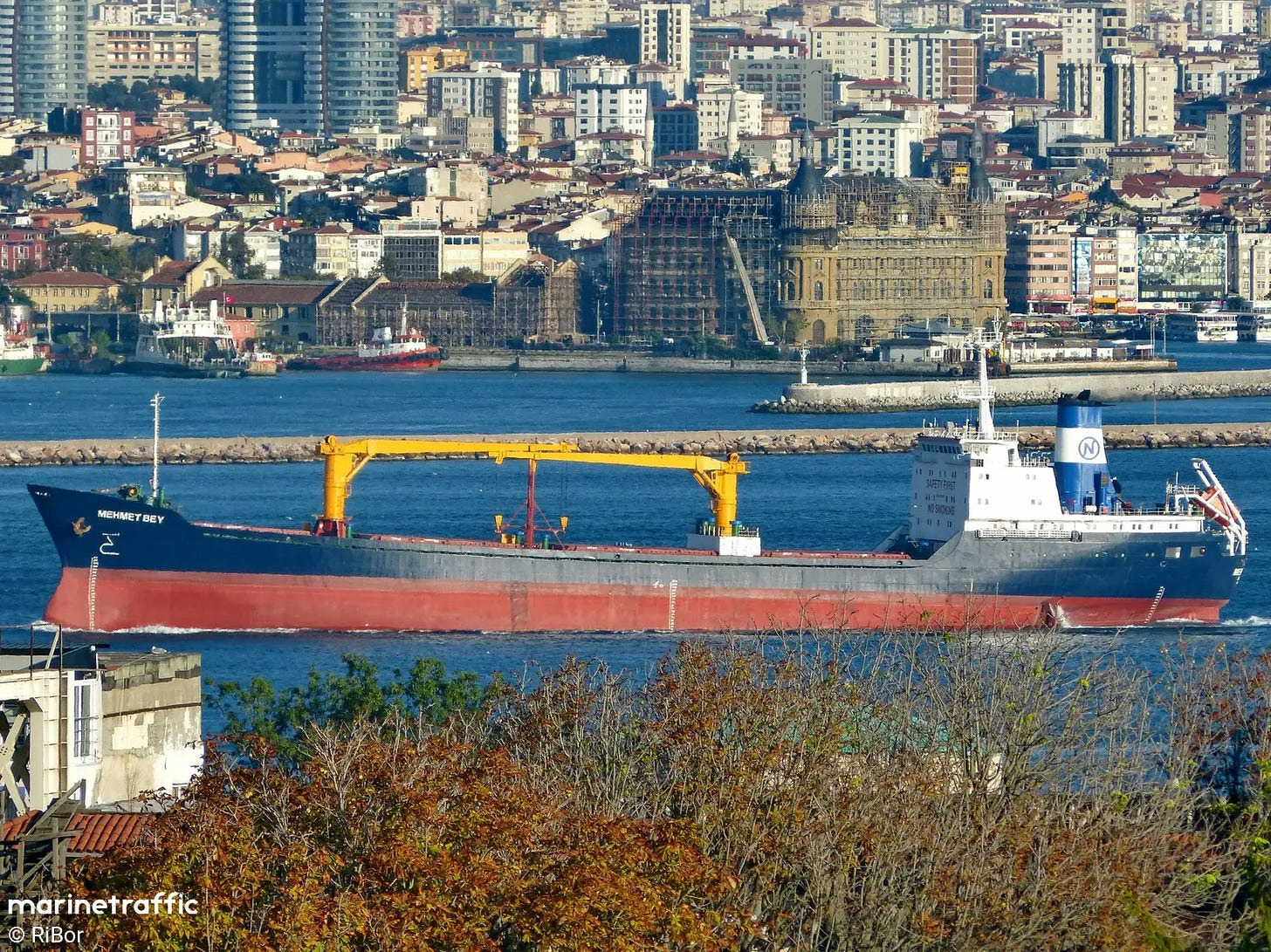
Photo of the Alfa 1 vessel from open sources. Source: MarineTraffic. At the same time, as seen in Andriushchenko's photos, two more Russian ships entered the port of Mariupol. The Counteroffensive identified them as ALPHA HERMES and VICTORIA V.
In 2024-2025 these two vessels exported more than 40,000 tons of coking coal from the port in Mariupol, according to Ukrainian intelligence.
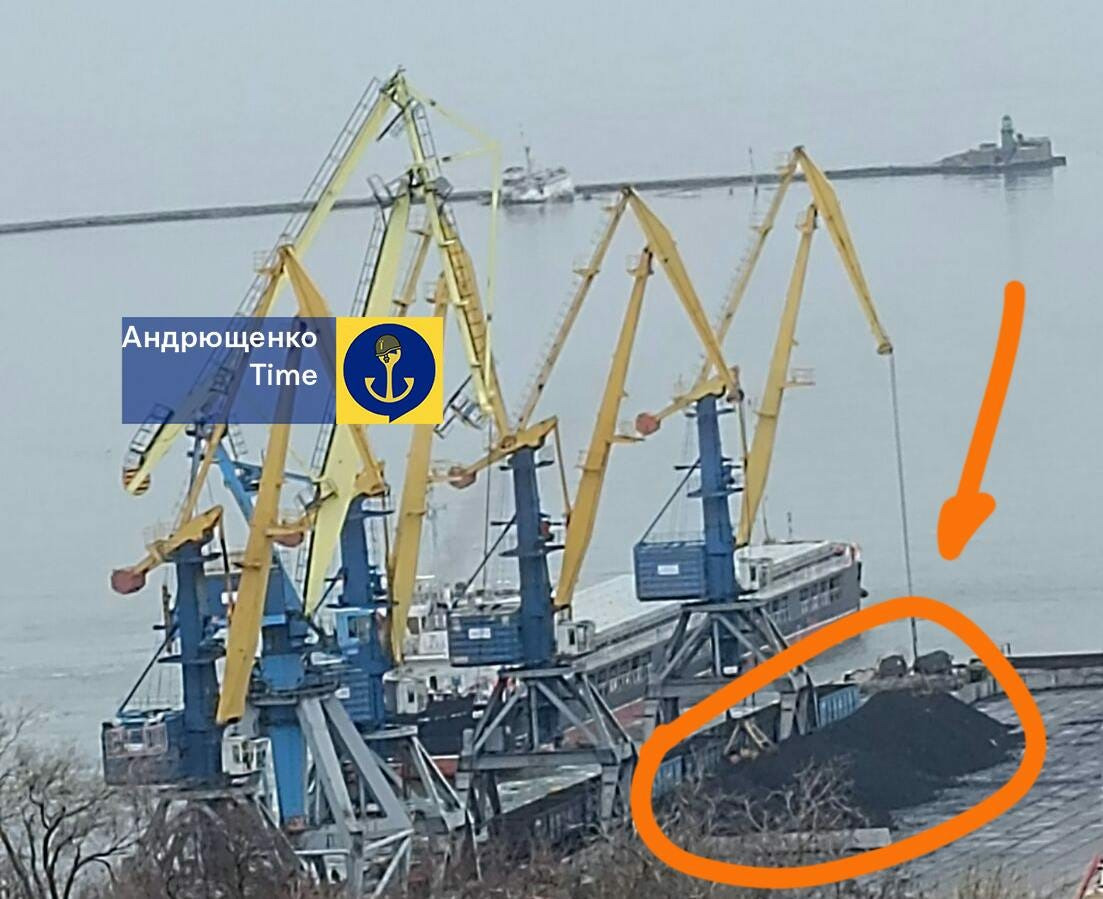
Photo of the ALPHA HERMES in the port of Mariupol in April 2025. Source: Head of Center for the Study of the Occupation Petro Andriushchenko. 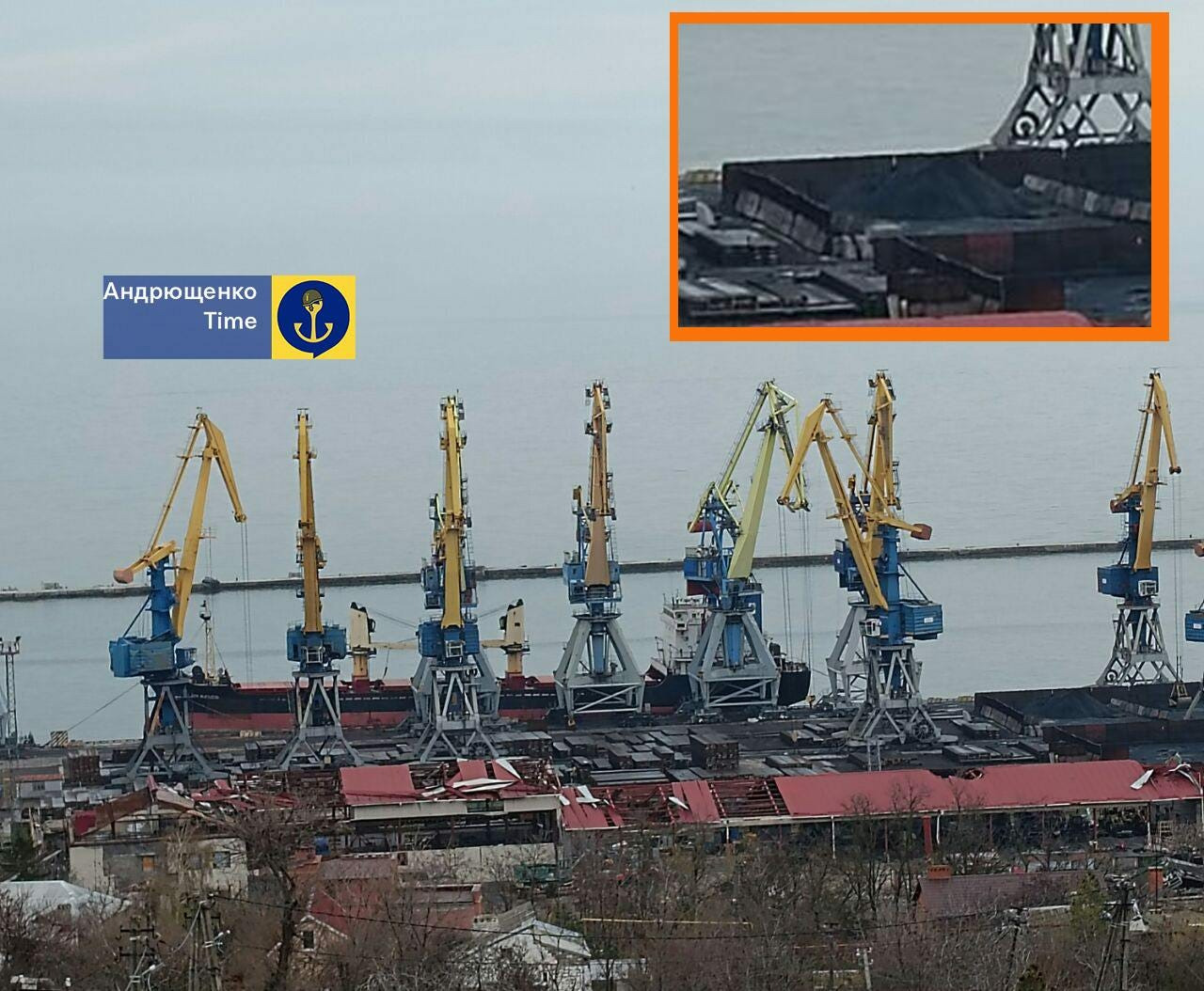
Photo of the VICTORIA V in the port of Mariupol in April 2025. Source: Head of Center for the Study of the Occupation Petro Andriushchenko. Vessel tracking sources don't show them entering Mariupol ports, as Russians deliberately disable ships' AIS (Automatic Identification System), making them invisible to outside trackers in a bid to hide the illegal presence of ships in territorial waters.
Both ALPHA HERMES and VICTORIA V belong to Russian companies, according to maritime records. In 2023, the United States imposed sanctions on ALPHA HERMES.
The export of Ukrainian coal isn't just regular commerce for a few businesses, but a deliberate Kremlin policy to quietly exploit Ukraine's mineral wealth.
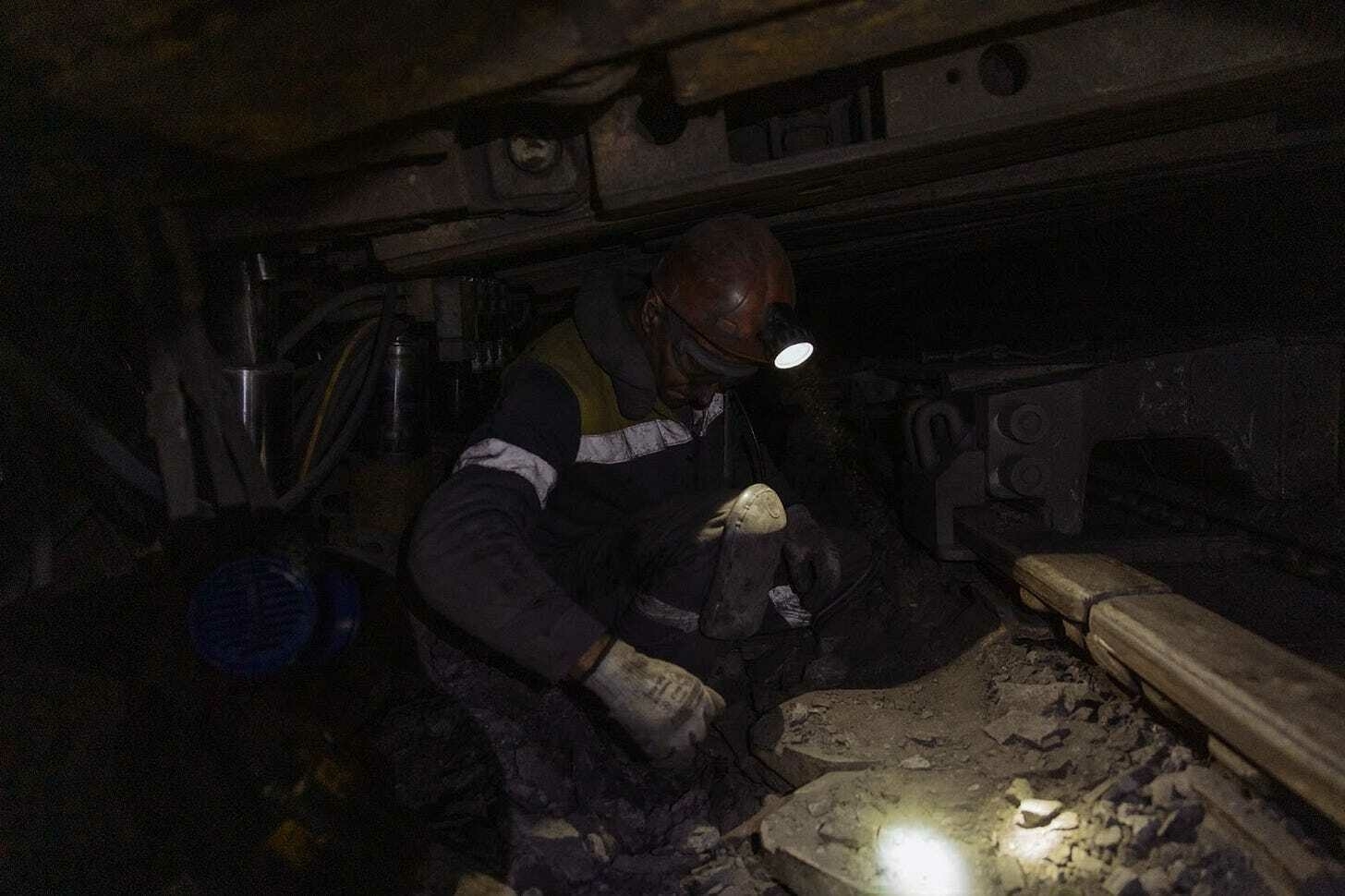
A miner works underground in a coal mine in the western part of Donbas, on October 11, 2024, amid the Russian invasion of Ukraine. Photo by ROMAN PILIPEY/AFP via Getty Images. How Russia abuse mine workers
Russia is attempting to conceal not only the illicit export of coal, but also the poor treatment of the miners who extract it.
When Russia occupied this part of eastern Ukraine more than 10 years ago, it promised prosperity and improved living conditions for Ukrainians. But in reality, dozens of mines in Donbas were closed or flooded, and theft appears to be a common practice.
One of the mines from which Russians produce coal is Komsomolets Donbassa. It was commissioned in the 1980s and named after the Soviet youth organization whose members built it.
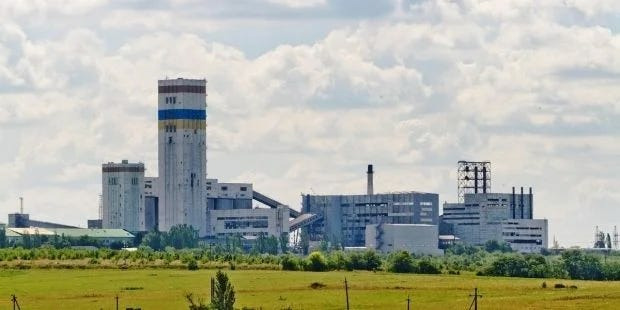
Komsomolets Donbassa mine. Source: UNIAN. Impex-Don, which manages four mines in Donetsk, promised to invest in equipment modernization and increase the number of employees as part of an effort to extract more Ukrainian coal and profit from its sale.
Despite these lofty promises, however, the company showed a complete disregard for its own employees. By scouring feedback from miners on Russian-language social media sites, The Counteroffensive was able to piece together a disturbing portrait of how the miners have been treated.
Under Telegram posts published by Komsomolets Donbassa mine, which Impex-Don manages, employees complained about not being paid on time. Some miners even publicly refused to keep working.
The saga apparently went on for months, with the Komsomolets Donbassa mine promising on May 15 to pay out the remainder of the salary still owed to employees for March, and employees still reporting late payments after that on its Telegram page. Partial payments that were insufficient for even basic needs led some employees to threaten to strike over unpaid wages.
Beyond exploiting existing resources, Russia is preparing to mine other minerals in occupied Ukrainian territories, including manganese, which can be used to improve the quality of steel in armored vehicles.
How Russia is destroying Ukraine's coal industry
By the end of October 2024, Ukraine controlled only 24 mines out of 145 that existed in 2014, according to Mykhailo Volynets, a senior miners' union official.
The rest are under Russian occupation.
Numerous miners told The Counteroffensive that Russia was looting Ukrainian mining equipment. Volynko, the head of the Independent Trade Union of Miners of Donbas, said the Russians set up four smelters on the border with the Rostov region, to which they brought stolen equipment and melted it down.
The Russian military itself aided in the transport and looting of equipment, Volynko said.
Russia is thus delivering a two-pronged blow: physically destroying Ukrainian mines and illegally looting the valuable infrastructure, and stealing while simultaneously selling abroad mineral resources that rightfully belong to Ukraine.
With an eye on ever-increasing extraction, Russia is demonstrating its true aim: prolonging the war to expand its control over profitable territories it can plunder.
In this time of great uncertainty — and unstable American support — it means that the situation on the ground is very dangerous. Your contributions help us get the body armor, medical gear, and supplies we need to stay safe.
Show your support by contributing to our tip jar - funds go towards keeping us safe and ensuring our work continues.
NEWS OF THE DAY:
TRUMP’S CALL FOR RUSSIA TO REJOIN AT G7 SUMMIT AS IT STRIKES KYIV:
Despite a fresh Russian attack on Kyiv, Donald Trump repeated his call to readmit Russia to the G7, calling its 2014 expulsion “a big mistake.” The U.S. President also refused to support additional sanctions unless Europe acts first.
Trump appeared to justify Russia’s 2022 full-scale invasion of Ukraine by linking it to Moscow’s removal from the G8. While Trump praises Putin and his ‘efforts’ for peace, Putin “make[s] the G7 leaders look weak,” Ukrainian foreign minister Sybiha said.
UKRAINE OPENS LITHIUM DEPOSITS TO INVESTORS UNDER U.S.-UKRAINE MINERAL DEAL: On Monday, the Ukrainian government approved access for private companies to develop one of its largest state-owned lithium deposits – the Dobra site in the Kirovohrad region.
Kyiv is preparing bidding recommendations for potential bidders, including U.S.-backed TechMet and Trump’s friend Ronald S. Lauder. The revenues from the extraction would go to a joint U.S.-Ukraine investment fund and later be reinvested in Ukraine’s economy, giving a portion to Washington.
This is the first project and a sign of the implementation of the U.S.-Ukraine mineral deal, signed on May 1, 2025.
DENMARK DEPLOYS ROBOTIC SAILBOATS TO SECURE BALTIC, NORTH SEAS: The Danish military is using uncrewed sailboats to monitor the increasingly tense waters of the Baltic and North Seas. The vessels can detect activity up to 20–30 miles above and below the surface, “going to places ... where we previously didn’t have eyes and ears,” Richard Jenkins, Saildrone founder and CEO, said.
The precaution comes amid growing security concerns, including alleged Russian sabotage, the destruction of at least 11 undersea cables since 2023, increased activity by Russia’s oil shadow fleet, and renewed U.S. interest in the Arctic, including Donald Trump’s eyeing of Greenland.
THE CAT OF CONFLICT:
Today’s cat of conflict is very famous among students of Veronika and Zoriana’s university. Seen on the car, he is just a chill guy.
Stay safe out there.
Best,
Veronika -
Former Ukrainian Foreign Minister predicts imminent collapse of Russia
Volodymyr Ohryzko, Ukraine's former Foreign Minister, has expressed a stark view regarding the future of Russia, suggesting that the nation is nearing the final chapter of its existence. In a candid discussion, he emphasized that the collapse of Russia can occur spontaneously, regardless of Western influence, due to existing internal factors.
During an appearance on the Espreso TV channel, where Ohryzko boldly stated, "Russia has reached the final line of its development. It will not hold under any circumstances. We just do not know what exactly will be the impetus for its collapse — it could be anything: the murder of a student in Makhachkala, a fire in Ulan-Ude, or another event."
According to Ohryzko, the nation is facing a critical phase reminiscent of the former USSR, slowly deteriorating from within, independent of external pressures. He touched upon the unpredictability of Russia's long-term future, positing that surviving until 2030 would be a substantial achievement in itself. "If Russia survives until 2030, it will already be a big success. However, most likely not," he stated, underscoring the urgency of intervening to prevent Russia from continuing as a global destabilizing force.
Adding to this narrative, a report from the Financial Times indicates that nearly half of foreign policy specialists believe Russia is on a path to either becoming a failed state or collapsing by 2033, further cementing Ohryzko's perspective.






